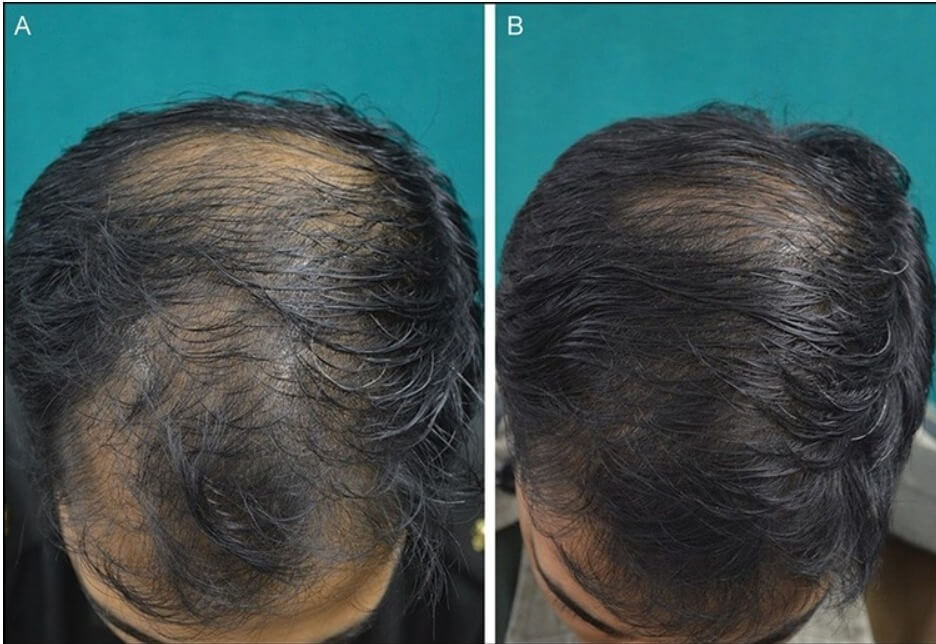Aging Skin Growths: Seborrheic Keratosis – Symptoms and Causes
What are the symptoms of seborrheic keratosis? What causes this type of skin growth as we age? Get the answers to these questions and more in this comprehensive article.
Seborrheic Keratosis: An Overview
Seborrheic keratosis is a common skin growth that often appears as we age. These raised, crusty growths are typically tan, brown, or black in color and can occur almost anywhere on the body. While they may look concerning, seborrheic keratosis is a benign condition that does not require treatment unless it bothers the individual or raises concerns about potential cancer.
Causes of Seborrheic Keratosis
The primary cause of seborrheic keratosis is exposure to ultraviolet (UV) light, either from the sun or from artificial sources like tanning beds. This UV radiation can trigger the rapid growth of skin cells, leading to the development of these raised, crusty growths. Additionally, hormonal changes and genetic factors may also play a role in the formation of seborrheic keratosis.

Symptoms of Seborrheic Keratosis
Seborrheic keratosis typically appears as one or more small, round or oval-shaped growths on the skin. These growths are often tan, brown, or black in color and have a rough, “stuck-on” appearance. They may also have a slightly raised, waxy, or even crusty texture. In some cases, the growths may bleed or become irritated if they are rubbed or scratched.
Diagnosis and Treatment
If you notice any suspicious growths on your skin, it’s important to have them evaluated by a dermatologist. They can perform a visual examination and, if necessary, take a biopsy to confirm the diagnosis of seborrheic keratosis. While seborrheic keratosis is generally harmless, it’s important to rule out the possibility of skin cancer.
Treatment for seborrheic keratosis is usually not necessary, but some people may choose to have the growths removed for cosmetic reasons or if they are causing irritation. Common treatment options include cryotherapy (freezing), laser removal, or surgical excision. In some cases, a topical cream may be prescribed to help manage the appearance of the growths.
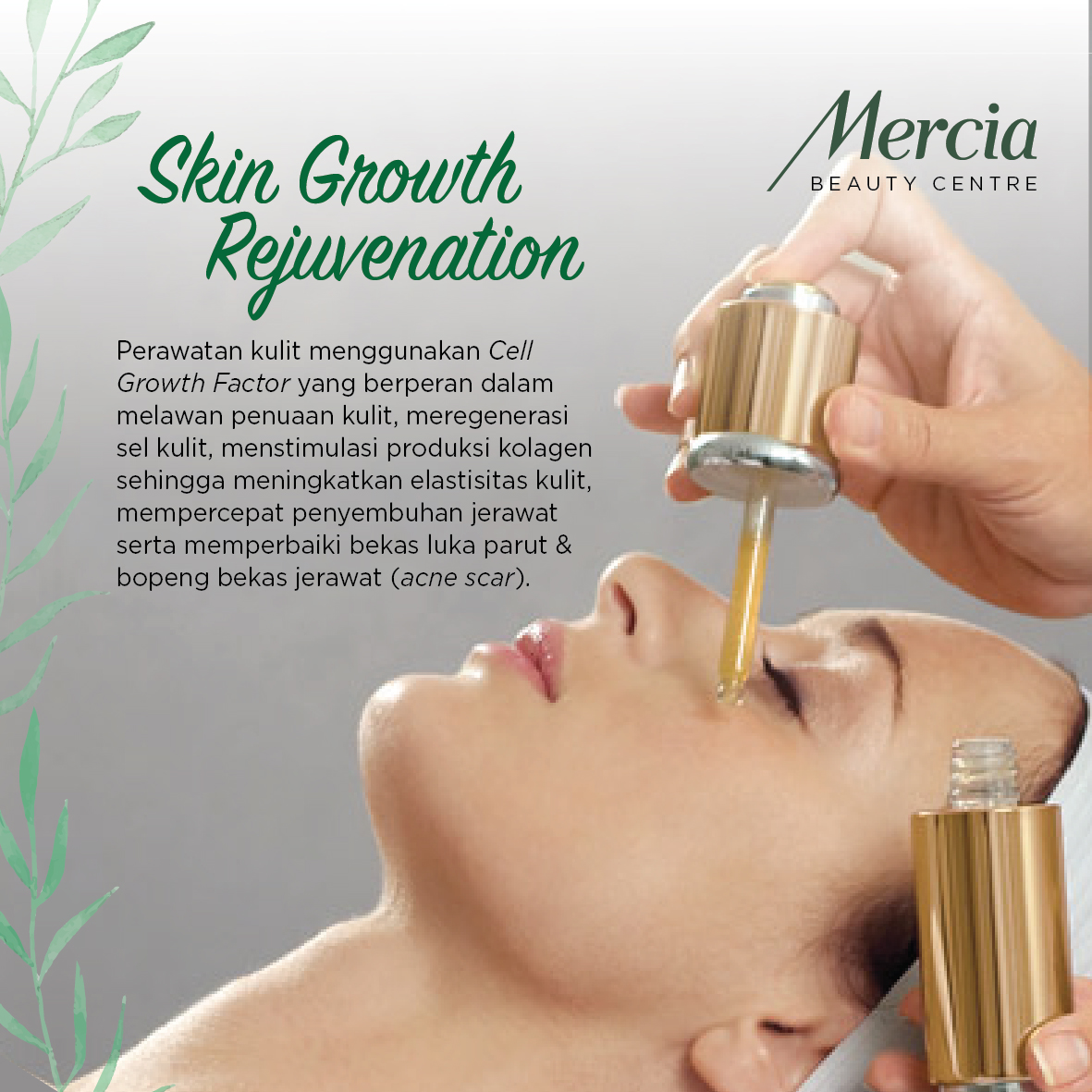
Preventing Seborrheic Keratosis
While there is no way to completely prevent the development of seborrheic keratosis, there are some steps you can take to reduce your risk:
- Protect your skin from UV exposure by using sunscreen, wearing protective clothing, and avoiding tanning beds.
- Maintain a healthy lifestyle, including a balanced diet and regular exercise, to support overall skin health.
- Monitor your skin regularly and report any changes or suspicious growths to your dermatologist.
Living with Seborrheic Keratosis
For most people, seborrheic keratosis is a harmless and common condition that comes with aging. While the appearance of these growths may be concerning, it’s important to remember that they are not cancerous and do not require treatment unless they are causing discomfort or cosmetic concerns.
If you have seborrheic keratosis, be sure to keep an eye on any changes in the growths and consult with your dermatologist if you have any concerns. With proper management and self-care, you can continue to enjoy healthy, vibrant skin as you age.
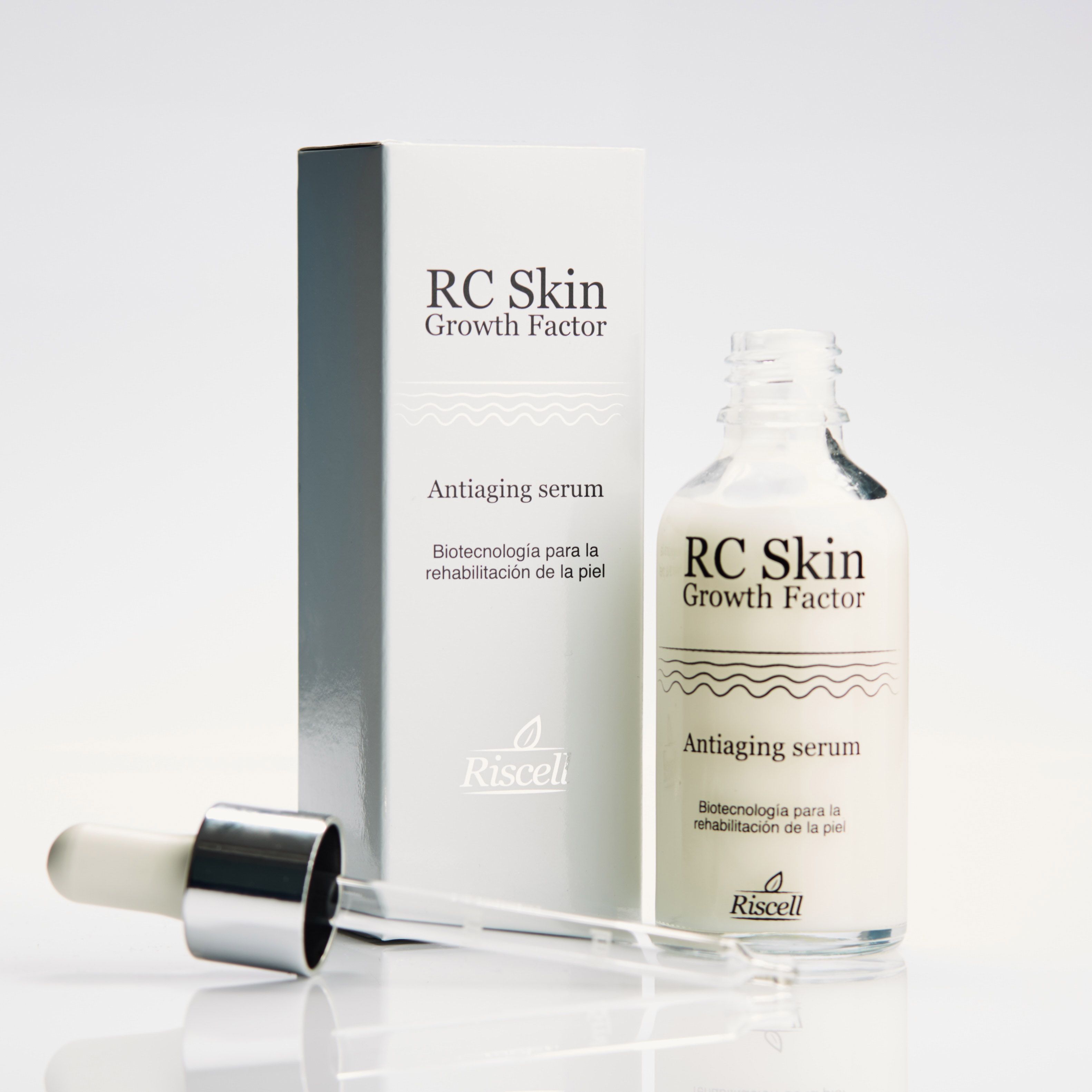
Key Takeaways
Here are the main points to remember about seborrheic keratosis:
- Seborrheic keratosis is a common, benign skin growth that often appears as we age.
- The primary cause is exposure to UV light, either from the sun or artificial sources like tanning beds.
- Symptoms include raised, crusty growths that are typically tan, brown, or black in color.
- While seborrheic keratosis is generally harmless, it’s important to have any suspicious growths checked by a dermatologist.
- Treatment options include cryotherapy, laser removal, or surgical excision, if desired.
- Protecting your skin from UV exposure and maintaining overall skin health can help reduce the risk of developing seborrheic keratosis.
Conclusion
Seborrheic keratosis is a common and often harmless skin condition that can develop as we age. Understanding the causes, symptoms, and treatment options can help you manage this condition and maintain healthy, vibrant skin throughout your golden years.
Weird Things That Happen to Your Skin as You Age
Medically Reviewed by Stephanie S. Gardner, MD on November 03, 2021
Ultraviolet light from the sun or from a manmade source like a tanning bed causes these raised, crusty growths. You’ll probably have more than one. Most turn red, but some can be tan or pinkish. See your doctor if you spot them: They can turn into cancer if not treated. The doctor may prescribe a cream, remove them with surgery, or freeze or burn them off.
These tan or brown spots can appear almost anywhere on your body, especially after middle age. You’ll probably have more than one. They’re harmless, but they can look like precancer growths or skin cancer, so get your doctor to check them out. Most people don’t need treatment, but the doctor might remove them if they bother you or to test for cancer cells.
Also called liver spots, these small dark patches often show up in places that get lots of sun, like your face, hands, shoulders, and arms. They’re more common if you’re over 50, but you can get them if you’re younger and you spend a lot of time outside. They don’t require treatment, but your doctor may take a sample to make sure it isn’t cancer. They can lighten them with bleaching products or remove them if you want. To prevent them, use sunscreen and avoid the sun.
They’re more common if you’re over 50, but you can get them if you’re younger and you spend a lot of time outside. They don’t require treatment, but your doctor may take a sample to make sure it isn’t cancer. They can lighten them with bleaching products or remove them if you want. To prevent them, use sunscreen and avoid the sun.
These small, red bumps or growths can show up anywhere on your body, but they’re more common on or near your chest, belly, and back. They don’t hurt, but they might bleed if they get hit or scraped. They’re usually fine left alone, but your doctor can remove them with a laser if you don’t like the way they look.
These small flaps of tissue hang from your skin by a kind of stalk. You’ll usually find them on your chest, back, neck, armpits, or around your groin. They aren’t dangerous, but they can get irritated if your clothes or jewelry rub against them. If one bothers you, the doctor might cut it off, freeze it off, or burn it off with an electric current or laser.
Long-term sun damage can turn your skin yellow and cause bumps and deep ridges. It affects people of all skin tones but it’s more obvious on light skin. The sun only affects the top layer of your skin, but tobacco smoke causes damage deeper down. If you have this condition, don’t smoke. Stay out of the sun — or do all you can to protect yourself from it.
Weakened blood vessels can start to swell and twist or bulge. They mostly show up on your legs and feet. They don’t usually signal a serious problem, but they can be linked to inflamed veins that result in superficial blood clots. And they often ache. Your doctor may give you a pair of compression socks or stockings to add pressure and help get rid of them. If that doesn’t work, they might suggest minor surgery.
These small bundles of broken blood vessels often pop up on your legs, ankles, feet, and maybe even your face. Causes include a backup of blood, hormone changes, or an injury. They don’t point to a major health problem, but they can burn.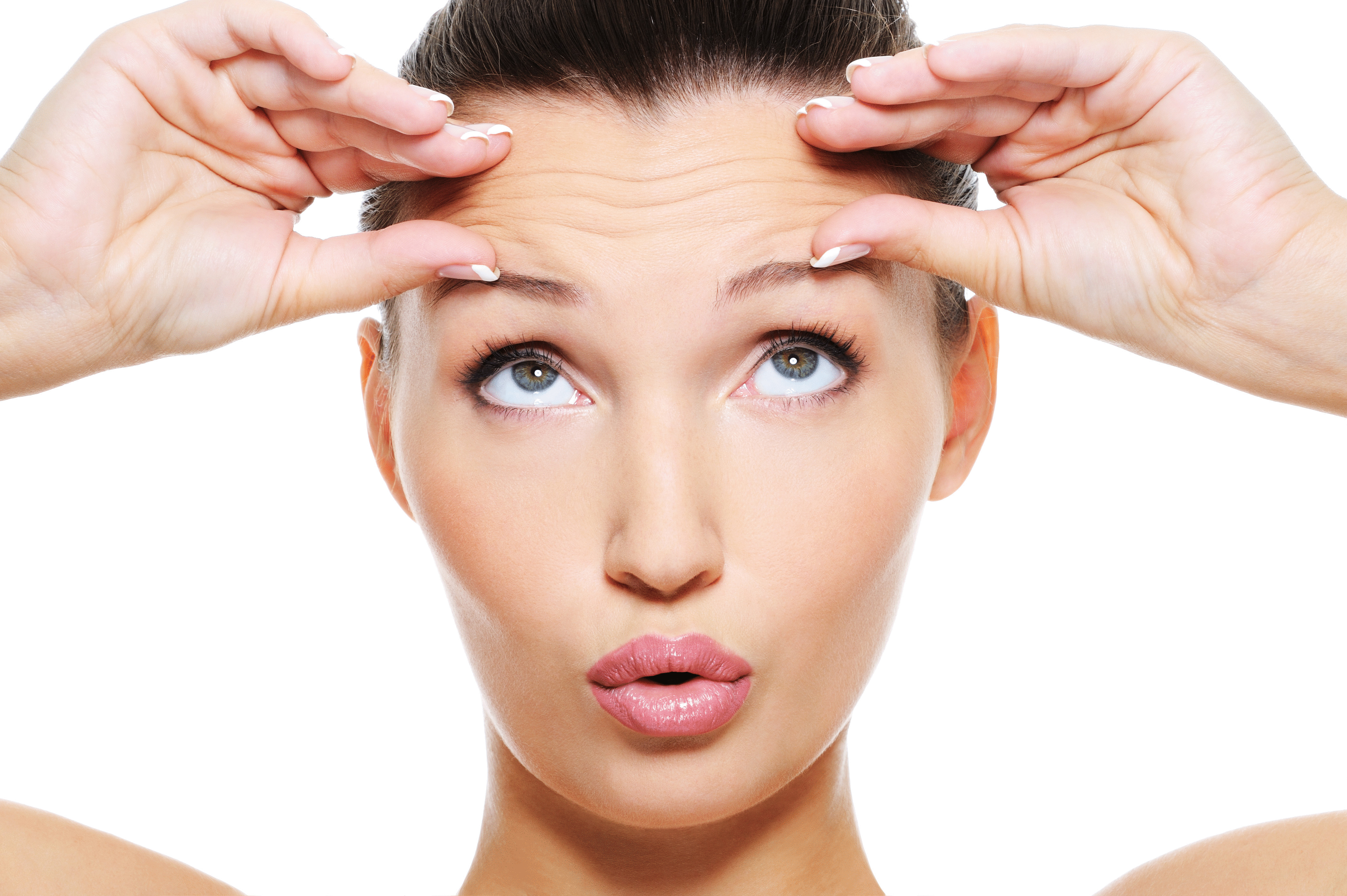 Try tight compression stockings to put the squeeze on them. If that doesn’t help, your doctor might suggest a minor surgical procedure.
Try tight compression stockings to put the squeeze on them. If that doesn’t help, your doctor might suggest a minor surgical procedure.
Aging skin gets drier. That can bring on the itch. See your doctor if it lasts more than 2 weeks or covers your body. It could be a sign of something more serious like kidney disease, lack of iron, thyroid, or liver problems. The doctor will examine you and might take blood to help figure out the cause and what’s best to treat it.
Blood flow problems make it easy for the skin on your lower legs and feet to get injured. If bacteria get in the broken skin, the whole area can become infected. If you have a health condition like diabetes that makes you heal slower, you might wind up with an open sore, or ulcer. The doctor will keep the wound clean, and in most cases, put pressure on the area. You may need surgery if the ulcers don’t go away.
This itchy, painful condition comes in two forms:
- Allergic, after you touch something like a poison ivy leaf or use a scented laundry product
- Irritant, which results from things that bother your skin like moisture — think chapped lips or diaper rash on a baby
As you get older, the condition may not respond as well to normal treatments.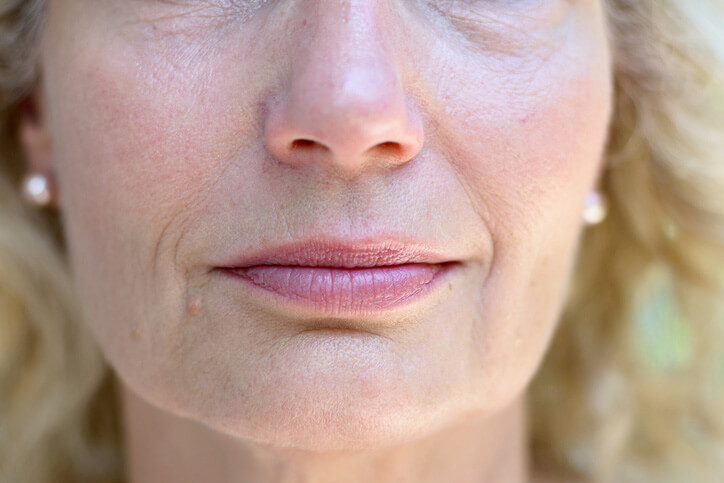 Medicated creams that that you use for age-related skin problems can also cause a reaction. Your doctor will figure out the cause so you can avoid it and will probably prescribe drugs to soothe the itch.
Medicated creams that that you use for age-related skin problems can also cause a reaction. Your doctor will figure out the cause so you can avoid it and will probably prescribe drugs to soothe the itch.
When tiny blood vessels near the surface of your skin break, you get a bruise. As you get older, your skin gets thinner and loses fat, which can make you bruise more easily. It’s usually nothing to worry about, but it could be a sign of something more serious. Some blood-thinning meds can also cause more or bigger bruises, so tell your doctor about any drugs you take.
They’re gonna show up as you age, but you might be able to slow the process with healthy food, plenty of sleep, and regular exercise. Protect yourself from the sun and watch out for strong soaps that strip natural oils from your skin. Don’t smoke — it makes them worse. Wrinkles aren’t bad for you, but most people aren’t wild about the way they look. Chemical peels, injections, laser treatments, and surgery can get rid of some.
The first places you notice droopy skin are often your jawline and neck. You might hear it called turkey neck. Sunscreen and moisturizer can help hold it off. And exercises for your neck, jaw, and throat muscles may also help. Surgery and other treatments can help get rid of it.
Damaged skin cells can grow out of control and become cancerous. One main cause is ultraviolet (UV) light from years of exposure to the sun or tanning beds. But you can get cancer in places where the sun doesn’t shine. That means your genes and toxins in the world around you also play a role. Your doctor may treat cancerous lesions with creams, injections, pills, surgeries, laser treatments, or radiation therapy. Depending on the type of skin cancer, you may need chemotherapy or other kinds of treatment, as well.
IMAGES PROVIDED BY:
- Getty Images
- Medical Images
- Getty Images
- Medical Images
- Getty Images
- Thinkstock
- Thinkstock
- Thinkstock
- Thinkstock
- Getty Images
- Getty Images
- Getty Images
- Getty Images
- Thinkstock
- Thinkstock
SOURCES:
Skin Cancer Foundation: “Actinic Keratosis (AK),” “Skin Cancer Facts & Statistics,” “Skin Cancer Information,” “Skin Cancer Treatment Glossary,” “Treatments for Actinic Keratosis. ”
”
American Academy of Dermatology: “Contact dermatitis,” “Seborrheic keratoses.”
Mayo Clinic: “Age spots (liver spots): Diagnosis,” “Age spots (liver spots): Overview” “Easy bruising: Why does it happen,” “Healthy aging,” “Itchy skin (pruritus): Diagnosis,” “Itchy skin (pruritus): Overview,” “Skin Cancer,” “Varicose Veins: Diagnosis,” “Varicose Veins: Overview,” “Warfarin side effects: Watch for interactions.”
Cleveland Clinic: “Common Benign Growths,” “Moles, Freckles, Skin Tags, Lentigines, & Seborrheic Keratoses,” “The Aging Skin,” “Varicose & Spider Veins.”
DermNet New Zealand: “Leg ulcers,” “Solar elastosis.”
American Society for Dermatologic Surgery: “Sagging Skin,” “Varicose Veins,” “Wrinkles.”
Womenshealth.gov: “Varicose veins and spider veins.”
Circulation Foundation: “Leg Ulcers.”
© 2021 WebMD, LLC. All rights reserved. View privacy policy and trust info
Aging changes in skin: MedlinePlus Medical Encyclopedia
Aging changes in the skin are a group of common conditions and developments that occur as people grow older.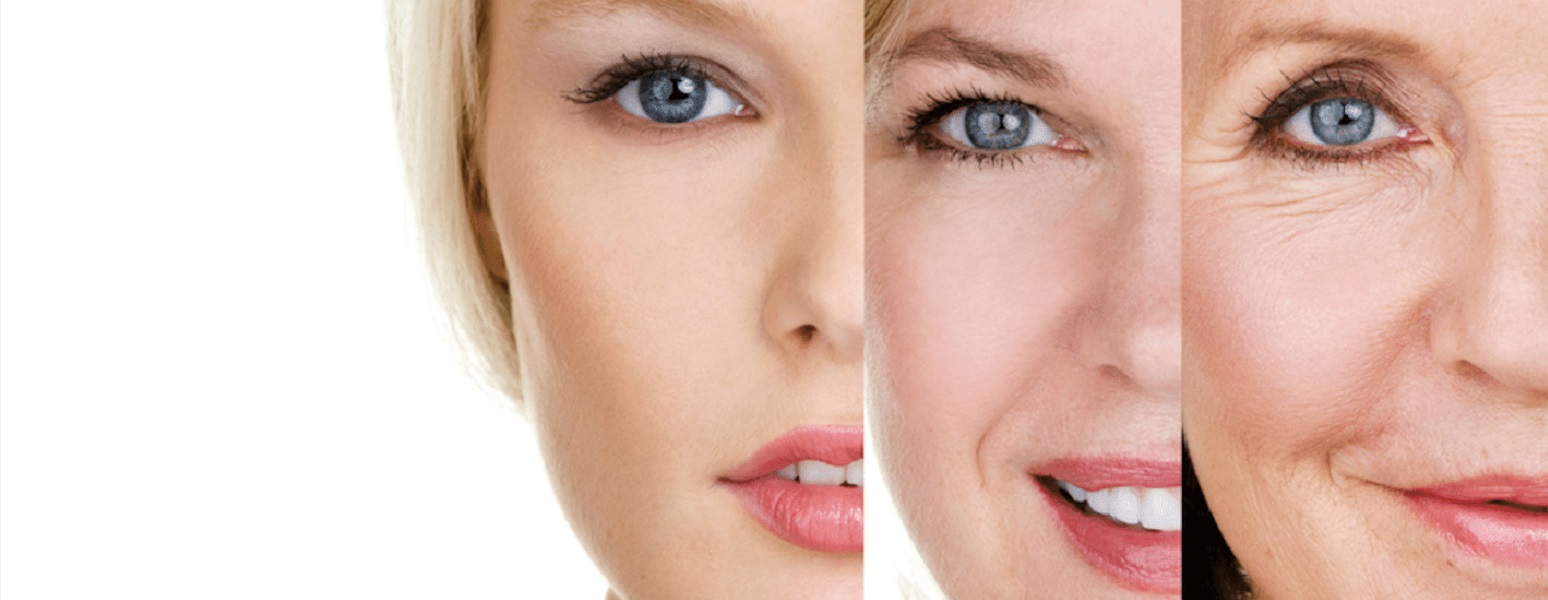
Skin changes are among the most visible signs of aging. Evidence of increasing age includes wrinkles and sagging skin. Whitening or graying of the hair is another obvious sign of aging.
Your skin does many things. It:
- Contains nerve receptors that allow you to feel touch, pain, and pressure
- Helps control fluid and electrolyte balance
- Helps control your body temperature
- Protects you from the environment
Although skin has many layers, it can generally be divided into three main parts:
- The outer part (epidermis) contains skin cells, pigment, and proteins.
- The middle part (dermis) contains skin cells, blood vessels, nerves, hair follicles, and oil glands. The dermis provides nutrients to the epidermis.
- The inner layer under the dermis (the subcutaneous layer) contains sweat glands, some hair follicles, blood vessels, and fat.
Each layer also contains connective tissue with collagen fibers to give support and elastin fibers to provide flexibility and strength.
Watch this video about:Components of skin
Skin changes are related to environmental factors, genetic makeup, nutrition, and other factors. The greatest single factor, though, is sun exposure. You can see this by comparing areas of your body that have regular sun exposure with areas that are protected from sunlight.
Natural pigments seem to provide some protection against sun-induced skin damage. Blue-eyed, fair-skinned people show more aging skin changes than people with darker, more heavily pigmented skin.
AGING CHANGES
With aging, the outer skin layer (epidermis) thins, even though the number of cell layers remains unchanged.
The number of pigment-containing cells (melanocytes) decreases. The remaining melanocytes increase in size. Aging skin looks thinner, paler, and clear (translucent). Pigmented spots including age spots or “liver spots” may appear in sun-exposed areas. The medical term for these areas is lentigos.
Changes in the connective tissue reduce the skin’s strength and elasticity. This is known as elastosis. It is more noticeable in sun-exposed areas (solar elastosis). Elastosis produces the leathery, weather-beaten appearance common to farmers, sailors, and others who spend a large amount of time outdoors.
This is known as elastosis. It is more noticeable in sun-exposed areas (solar elastosis). Elastosis produces the leathery, weather-beaten appearance common to farmers, sailors, and others who spend a large amount of time outdoors.
The blood vessels of the dermis become more fragile. This leads to bruising, bleeding under the skin (often called senile purpura), and cherry angiomas.
Sebaceous glands produce less oil as you age. Men experience a minimal decrease, most often after the age of 80. Women gradually produce less oil beginning after menopause. This can make it harder to keep the skin moist, resulting in dryness and itchiness.
The subcutaneous fat layer thins so it has less insulation and padding. This increases your risk of skin injury and reduces your ability to maintain body temperature. Because you have less natural insulation, you can get hypothermia in cold weather.
Some medicines are absorbed by the fat layer. Shrinkage of this layer may change the way that these medicines work.
The sweat glands produce less sweat. This makes it harder to keep cool. Your risk for overheating or developing heat stroke increases.
Growths such as skin tags, warts, brown rough patches (seborrheic keratoses), and other blemishes are more common in older people. Also common are pinkish rough patches (actinic keratosis) which have a small chance of becoming a skin cancer. Skin cancers are also common and usually located in sun-exposed areas.
EFFECT OF CHANGES
As you age, you are at increased risk for skin injury. Your skin is thinner, more fragile, and you lose some of the protective fat layer. You also may be less able to sense touch, pressure, vibration, heat, and cold.
Rubbing or pulling on the skin can cause skin tears. Fragile blood vessels can break easily. Bruises, flat collections of blood (purpura), and raised collections of blood (hematomas) may form after even a minor injury.
Pressure ulcers can be caused by skin changes, loss of the fat layer, reduced activity, poor nutrition, and illnesses.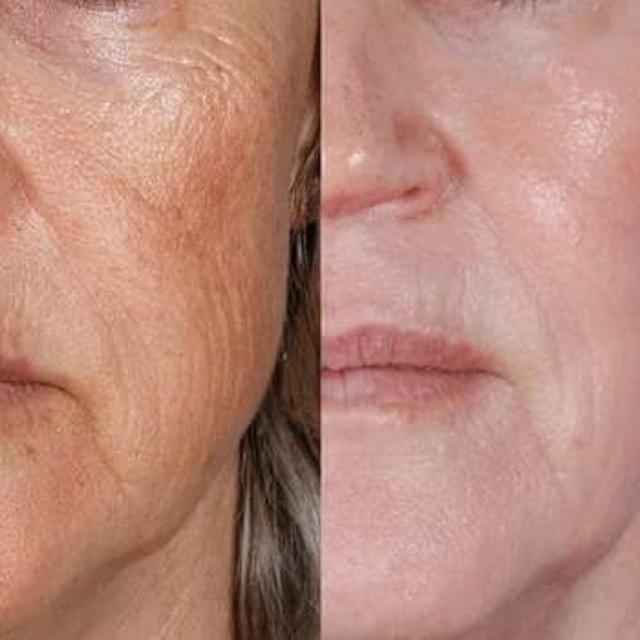 Sores are most easily seen on the outside surface of the forearms, but they can occur anywhere on the body.
Sores are most easily seen on the outside surface of the forearms, but they can occur anywhere on the body.
Aging skin repairs itself more slowly than younger skin. Wound healing may be up to 4 times slower. This contributes to pressure ulcers and infections. Diabetes, blood vessel changes, lowered immunity, and other factors also affect healing.
COMMON PROBLEMS
Skin disorders are so common among older people that it is often hard to tell normal changes from those related to a disorder. More than 90% of all older people have some type of skin disorder.
Skin disorders can be caused by many conditions, including:
- Blood vessel diseases, such as atherosclerosis
- Diabetes
- Heart disease
- Liver disease
- Nutritional deficiencies
- Obesity
- Reactions to medicines
- Stress
Other causes of skin changes:
- Allergies to plants and other substances
- Climate
- Clothing
- Exposures to industrial and household chemicals
- Indoor heating
Sunlight can cause:
- Loss of elasticity (elastosis)
- Noncancerous skin growths (keratoacanthomas)
- Pigment changes such as liver spots
- Thickening of the skin
Sun exposure has also been directly linked to skin cancers, including basal cell cancer, squamous cell carcinoma, and melanoma.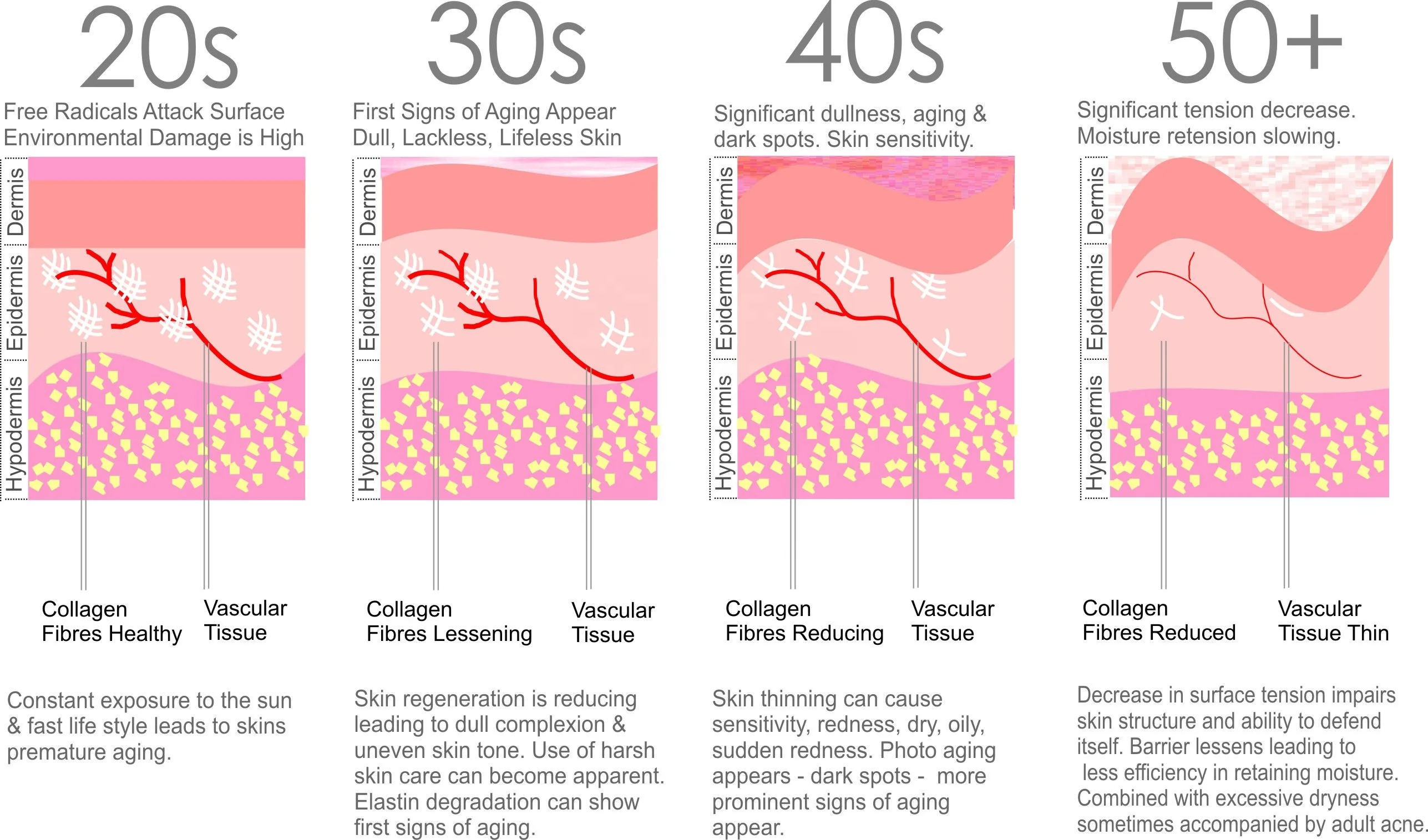
PREVENTION
Because most skin changes are related to sun exposure, prevention is a lifelong process.
- Prevent sunburn if at all possible.
- Use a good quality sunscreen when outdoors, even in the winter.
- Wear protective clothing and a hat when needed.
Good nutrition and adequate fluids are also helpful. Dehydration increases the risk of skin injury. Sometimes minor nutritional deficiencies can cause rashes, skin lesions, and other skin changes, even if you have no other symptoms.
Keep skin moist with lotions and other moisturizers. . Do not use soaps that are strongly detergent (drying) or heavily perfumed. Bath oils are not recommended because they can cause you to slip and fall. Moist skin is more comfortable and will heal more quickly.
RELATED TOPICS
- Aging changes in body shape
- Aging changes in hair and nails
- Aging changes in hormone production
- Aging changes in organs, tissues, and cells
- Aging changes in the bones, muscles, and joints
- Aging changes in the breast
- Aging changes in the face
- Aging changes in the senses
Types of neoplasms on the skin and their removal
Neoplasms appear on the human body, including on the face, with age.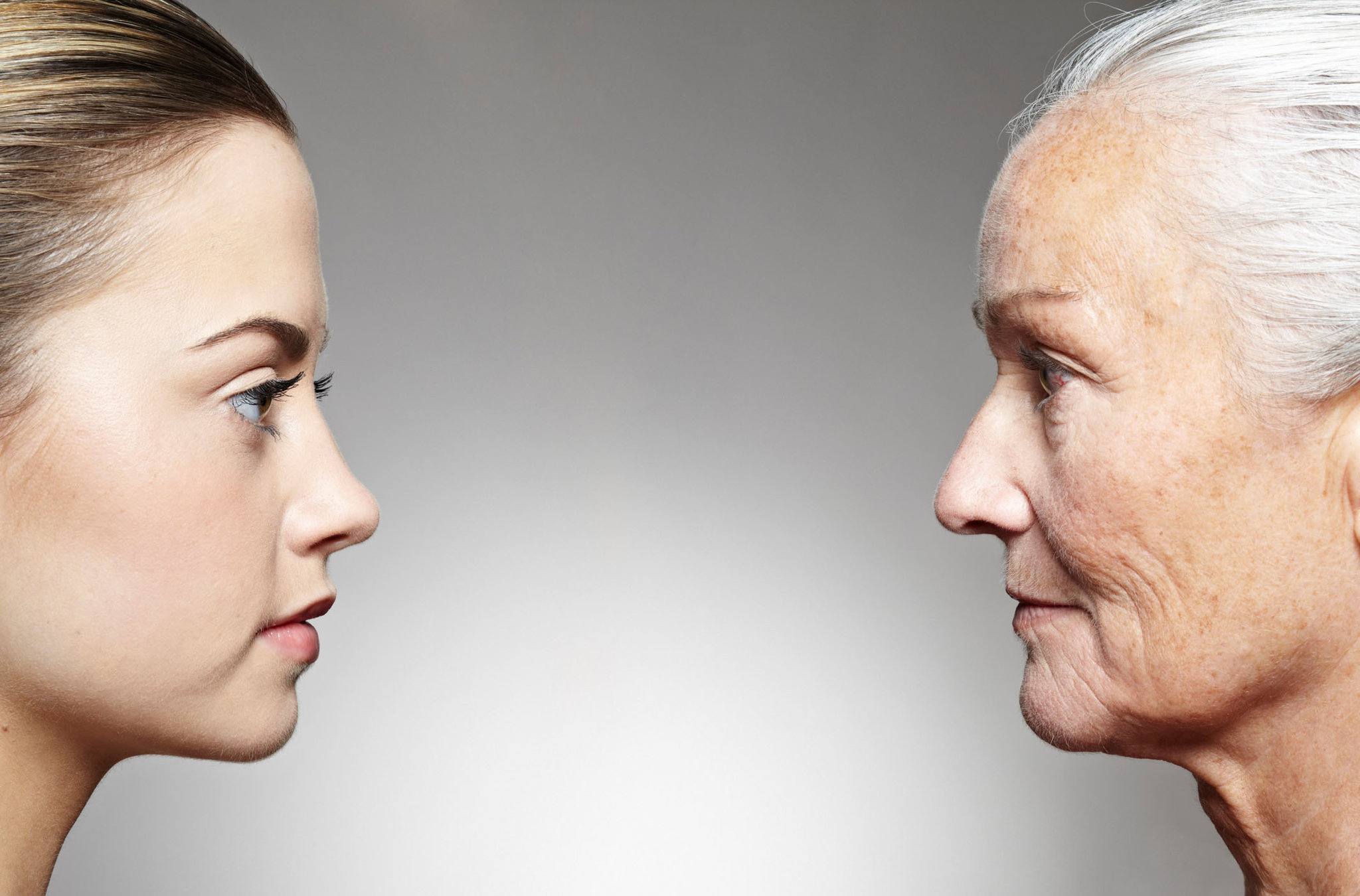 They are subdivided into papillomas, warts, moles, keratomas, hemangiomas, fibromas, calluses, skin horn, basaliomas. All of them have different indications for removal.
They are subdivided into papillomas, warts, moles, keratomas, hemangiomas, fibromas, calluses, skin horn, basaliomas. All of them have different indications for removal.
Types of neoplasms and their causes
- Papillomas appear as a result of a virus that enters the body through mucous membranes, microwounds or by airborne droplets. Usually such a virus is activated during a decrease in immunity. As a result, single or numerous papillomas grow on the skin. Indications for removal are hygienic and psychological. With the help of a laser procedure, they are removed quickly and efficiently. Before laser intervention, it is necessary to undergo a histological examination, which will help eliminate the risk of papilloma degeneration into oncology.
- Moles are removed quickly and safely. When a mole is removed with a laser, pain and the risk of infection are completely absent. Sometimes, when large moles are removed, a light spot remains on the body.
 Also, in some cases, the removal occurs in several stages. Before the procedure, the patient must pass a histological analysis.
Also, in some cases, the removal occurs in several stages. Before the procedure, the patient must pass a histological analysis. - Wart is a benign growth in the epidermis of the skin, formed in the presence of human papillomavirus. They can be painful and uncomfortable. The wart is a contagious neoplasm, so it must be removed immediately. Thanks to the use of laser technology, it is very easy to get rid of this neoplasm without blood and pain. With such a type of warts as plantar, the laser can easily cope, and is the only way to eliminate it.
- Keratoma – this type of neoplasm appears as a result of an increased number of epidermal cells – keratocytes. There is no risk of degeneration into an oncological tumor. Factors contributing to the appearance of keratomas are exposure to ultraviolet radiation, the use of products containing carcinogens and toxins, an unhealthy lifestyle, smoking, and alcohol abuse. It is usually gray or brown in color.
 May be single or multiple.
May be single or multiple. - Xanthelasma is a benign neoplasm that looks like a flat, painless plaque. It can appear both in singular form and in plural form. Multiple formations can cause discomfort to the patient. There is no risk of transformation into a malignant tumor; they grow and multiply slowly. Removal occurs surgically using cryodestruction and laser equipment. The laser removal method is considered the most effective and safest.
- Hemangioma is considered the most common type of neoplasm. It is a vascular tumor that consists of the inner layers of capillaries, arteries and veins. Hemangioma is diagnosed in 10% of newborns, usually girls. It can grow on the face, body, head, limbs, internal organs. The reasons are heredity and adverse effects on the fetus. They are not dangerous and do not develop into oncology. However, growing, they can affect the change in the structure of organs. If the neoplasm is injured, there may be a threat of infection.
 The main indication for removal is a cosmetic defect. The laser method is recognized as the most optimal.
The main indication for removal is a cosmetic defect. The laser method is recognized as the most optimal.
- Cutaneous horn is a benign conical lesion growing up to 1-5 cm. There is a risk of this formation developing into oncology. Therefore, its removal is mandatory. The most suitable method is considered to be using a laser.
- Fibroma is a benign neoplasm, usually diagnosed in older women. Its danger is that it can affect internal organs. The reasons for the formation of fibroids are called changes in the hormonal background, heredity, damage to the skin. On the skin, it is immediately noticeable and can cause discomfort. In this case, it must be removed. Using the laser method is the best option.
- Molluscum contagiosum is a type of childhood infection that usually occurs in children under 10 years of age. Transmitted by contact with the skin of an infected person. Signs of the disease are the appearance on the skin of small smooth nodules of white and red color.
 Their number can be from 20 to 100. The diagnosis can be made after a histological examination. Treatment of the infection is reduced to the removal of rashes by the laser method, taking antiviral drugs and increasing immunity. During removal, local anesthesia is used. The resulting wounds after the procedure are treated with antiseptics.
Their number can be from 20 to 100. The diagnosis can be made after a histological examination. Treatment of the infection is reduced to the removal of rashes by the laser method, taking antiviral drugs and increasing immunity. During removal, local anesthesia is used. The resulting wounds after the procedure are treated with antiseptics. - Corns are absolutely safe for life, but cause a lot of inconvenience. If it appears on the foot, there are inconveniences when walking. Changes in gait are not for the better, leading to a curvature of the spine. The laser method of removal is an ideal option, as it prevents the formation of corns in the future.
- Atheroma occurs as a result of blockage of the duct of the sebaceous gland, which leads to the formation of a cyst. Usually their location is in areas covered with hair. This neoplasm must be removed, as suppuration and degeneration into a malignant tumor may occur. For removal, laser and surgical methods are used.

- Basalioma is a skin neoplasm that occurs most often in men. Formed on the scalp and on the face. Appears from the basal cells of the epidermis, has a malignant nature and is one of the varieties of skin cancer. Removal of such a neoplasm is mandatory. This is best done using the laser method.
Contraindications for laser removal
Before the removal procedure, it is necessary to consult a cosmetologist. The doctor will decide whether to remove and what is the best way to do it. But, like any medical procedure, laser removal of neoplasms has a number of contraindications.
Contraindications:
- pregnancy and lactation;
- mental illness and disorders of the nervous system;
- the presence of bleeding;
- diabetes mellitus of any type;
- with rapid growth of growths.
Several types of laser equipment are used in medical cosmetology.
Main types of laser equipment
Erbium. Differs in the most exact action and small depth of penetration. Tissues that are close to the treated areas are not injured. Mainly used for skin polishing.
Differs in the most exact action and small depth of penetration. Tissues that are close to the treated areas are not injured. Mainly used for skin polishing.
Carbon Dioxide (Carbon Dioxide) – most often used to remove skin neoplasms. The device allows you to direct the beam dosed and adjust the depth of penetration.
Argon is a continuous emission surgical laser. The alexandrite laser is characterized by long-range action. It is widely used in surgery and cosmetology, mainly for depilation.
Neodymium works with a directional infrared beam, used for various cosmetic procedures.
Diode is pulsed. Its beam has a penetration depth of not more than 4 mm.
HeNe – laser , using a mixture of helium and neon for action, weakly penetrating.
The laser removal procedure usually does not take more than 15 minutes. Anesthesia is given before starting. Conducting one session makes it possible to eliminate several neoplasms. During laser exposure, tissue evaporation occurs.
Conducting one session makes it possible to eliminate several neoplasms. During laser exposure, tissue evaporation occurs.
After exposure to the formation of a beam, a wound is formed on the skin, around which there are damaged cells. With laser exposure, blood vessels are sealed, and there is no risk of infection. Repeated removal of growths should be carried out with a break of at least two weeks.
After the procedure, the treated areas must be treated with an antiseptic. It is not recommended to wet the wound for 2-3 days. Refuse to visit the sauna, bath, pool, beach for two weeks.
Neoplasms of the skin. What is Skin Neoplasm?
IMPORTANT
The information in this section should not be used for self-diagnosis or self-treatment. In case of pain or other exacerbation of the disease, only the attending physician should prescribe diagnostic tests. For diagnosis and proper treatment, you should contact your doctor.
Skin neoplasms are benign or malignant tumor lesions of the skin as a result of pathological proliferation of tissue cells. Benign neoplasms include warts, moles, papillomas, lipomas, angiomas, adenomas, etc. Malignant ones include melanoma, sarcoma, epithelioma. A special group is made up of precancerous tumors of the skin: leukoplakia, cutaneous horn, senile keratoma, etc. Most of the skin neoplasms must be removed, because when injured or insolation, there is a high probability of their malignant degeneration.
Benign neoplasms include warts, moles, papillomas, lipomas, angiomas, adenomas, etc. Malignant ones include melanoma, sarcoma, epithelioma. A special group is made up of precancerous tumors of the skin: leukoplakia, cutaneous horn, senile keratoma, etc. Most of the skin neoplasms must be removed, because when injured or insolation, there is a high probability of their malignant degeneration.
- Benign neoplasms of the skin
- Premalignant neoplasms of the skin
- Premalignant neoplasms of the skin of senile age
- Malignant neoplasms of the skin
- Poorly differentiated skin cancers
- Diagnosis of skin neoplasms
- Treatment and prevention
- Prices for treatment
General
Skin neoplasms is a pathological growth of the dermis, in which the size of cells or their number increases; pathologically altered cells of the dermis form into a limited tumor. The number of new cells in a healthy body is proportional to the number of dead ones, but under the influence of adverse factors, uncontrolled cell reproduction begins, cells divide before reaching maturity, as a result of which they are not able to perform their original functions.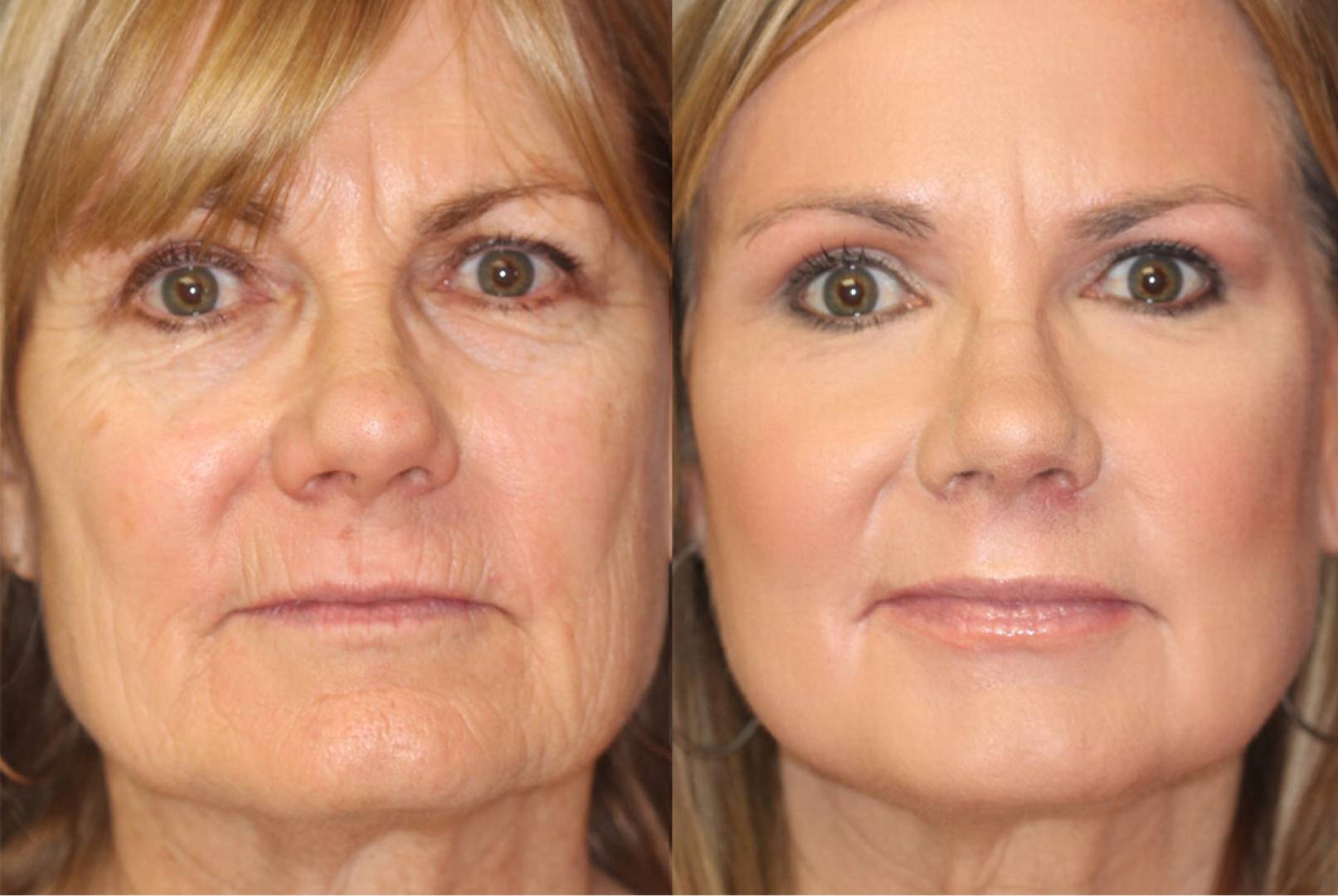 With malignant neoplasms of the skin, it is sometimes very difficult to differentiate from which layer of the dermis the tumor originated.
With malignant neoplasms of the skin, it is sometimes very difficult to differentiate from which layer of the dermis the tumor originated.
There are a lot of factors that can trigger the process of uncontrolled cell division, but the main predisposing factor for skin neoplasms is frequent skin injuries, as a result of which cells have to regenerate quite actively and, as a result, control over division is lost. All types of radiation, including X-ray and solar radiation, provoke skin neoplasms. Hereditary predisposition and light skin with an abundance of moles, combined with other risk factors, almost always lead to benign skin neoplasms, which can later become malignant and transform into a cancerous tumor.
Despite the fact that benign neoplasms of the skin do not directly harm the life of the patient, they, having a huge size, can disrupt the normal functioning of various organs, squeezing nerve endings – cause pain, and squeezing blood vessels – disrupt blood circulation in a particular area of the body.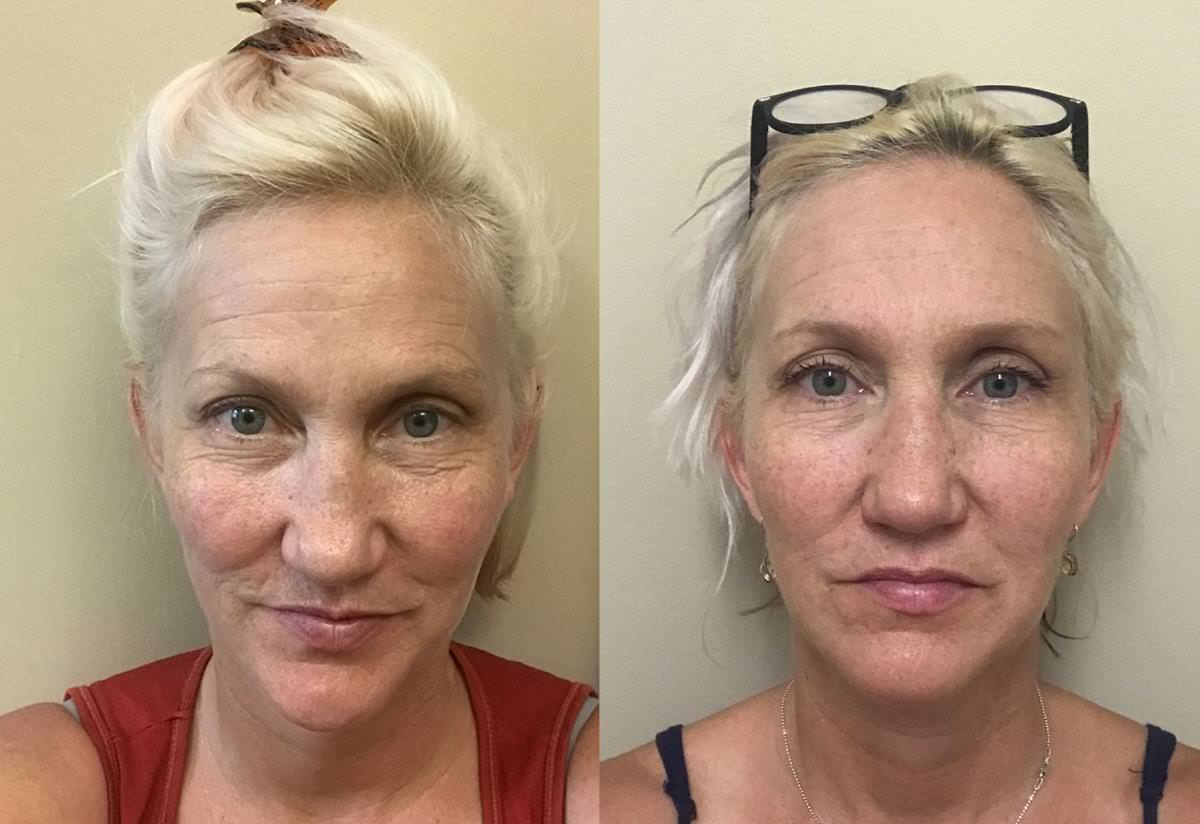
Constant exposure of the skin to aggressive substances, skin infections of a bacterial and viral nature, as well as chronic skin diseases such as eczema, increase the likelihood of skin neoplasms. Skin neoplasms as a result of metastases of cancer cells from other organs and skin neoplasms in individuals who are not at risk are rarely diagnosed. All skin neoplasms are divided into three groups: benign skin neoplasms, precancerous skin conditions and malignant neoplasms.
Skin neoplasms
Benign neoplasms of the skin
Cells of benign skin neoplasms, despite the lost control over division, can be differentiated, and they retain their original functions to a greater extent. Such tumors grow slowly, compress nearby tissues, but never droop into them.
Lipoma is a neoplasm of the skin from the fatty layer, atheroma is an epithelial cyst, which, unlike lipoma, often malignant into liposarcoma.
Papillomas and warts – are of a viral nature and outwardly look like a skin neoplasm in the form of bulges or growths on the leg. The latter, often injured, become malignant and transform into cancerous neoplasms of the skin and other organs. A dangerous precancerous condition is the giant condyloma of Bushke-Levenshtein, it is caused by HPV, like ordinary warts, but is characterized by rapid growth, gigantic size and the release of exudate with an unpleasant odor. Unlike ordinary warts, it has a progressive course, a tendency to germinate in nearby tissues and recurs even after complete excision of the affected area, very quickly transforming into squamous cell skin cancer.
The latter, often injured, become malignant and transform into cancerous neoplasms of the skin and other organs. A dangerous precancerous condition is the giant condyloma of Bushke-Levenshtein, it is caused by HPV, like ordinary warts, but is characterized by rapid growth, gigantic size and the release of exudate with an unpleasant odor. Unlike ordinary warts, it has a progressive course, a tendency to germinate in nearby tissues and recurs even after complete excision of the affected area, very quickly transforming into squamous cell skin cancer.
Dermatofibroma is a benign neoplasm of the skin and connective tissue; The pathogenesis of this tumor is unknown, but there is an association between histogenetic precapillary changes and the development of dermatofibroma. It is diagnosed in women of young and mature age, it is marked by slow growth and insignificant subjective sensations, in isolated cases this skin neoplasm begins to grow spontaneously and in even more rare cases it becomes malignant.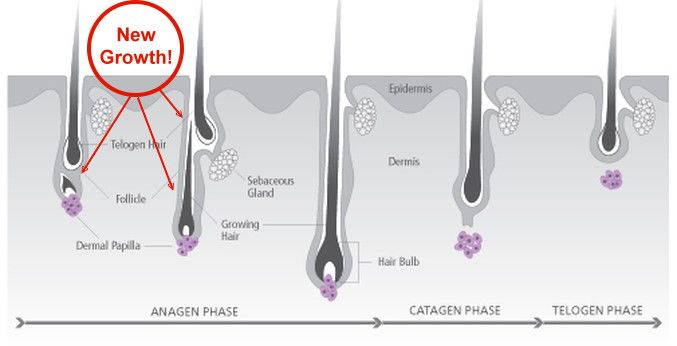 Outwardly, it looks like a deeply soldered knot, only a small part of the skin neoplasm in the form of a hemisphere protrudes on the surface; the surface of the tumor is smooth, rarely warty or hyperkeratotic. The localization of the tumor does not have clear preferences, but is more common on the lower extremities, the color of the neoplasm varies from light gray to brown and blue-black. The size of the tumor is small, from 0.3 to 3 cm in diameter, it should be differentiated from skin neoplasms such as pigmented nevus, basalioma and dermatofibrosarcoma.
Outwardly, it looks like a deeply soldered knot, only a small part of the skin neoplasm in the form of a hemisphere protrudes on the surface; the surface of the tumor is smooth, rarely warty or hyperkeratotic. The localization of the tumor does not have clear preferences, but is more common on the lower extremities, the color of the neoplasm varies from light gray to brown and blue-black. The size of the tumor is small, from 0.3 to 3 cm in diameter, it should be differentiated from skin neoplasms such as pigmented nevus, basalioma and dermatofibrosarcoma.
Moles and nevi are limited hyperpigmented areas of the skin due to an uneven accumulation of melanocytes, most of them are acquired neoplasms on the skin due to excessive exposure to the open rays of the sun. About half of malignant melanomas develop from the melanthocytes of moles and birthmarks. Therefore, if the number of moles and their size increases, the color intensity increases, then it is necessary to consult an oncodermatologist or a dermatologist.
Premalignant neoplasms of the skin
Pigmented xeroderma, in the pathogenesis of which lies an increased sensitivity of the skin to various radiation energies, a congenital disease, due to disturbances in the enzyme system, the dermis loses its regeneration properties. This pathology can be suspected by a large number of freckles in children of the first year of life in areas of the skin that are most often exposed to insolation. Freckles quickly transform into warty growths. Dispensary observation of children with a genetic predisposition and constant protection of the skin from solar radiation can reduce the likelihood of skin cancer. With such a skin neoplasm as xeroderma pigmentosum, the prognosis is unfavorable, since in almost all cases cellular and squamous cell carcinoma develops. Mortality in the age group up to 20 years is very high.
Premalignant neoplasms of the skin of senile age
Bowen’s disease or intraepidermal cancer is clinically manifested by neoplasms on the skin of a patchy-nodular nature, in the form of papules and plaques, which merge to form extensive surfaces covered with papillomatous outgrowths. The incidence is high among people of mature and senile age of both sexes. Predisposing factors are the presence of warts caused by the human papillomavirus; due to the pronounced polymorphism of the cells of this skin neoplasm, Bowen’s disease ends with undifferentiated cancer with the development of metastases in other organs and tissues.
The incidence is high among people of mature and senile age of both sexes. Predisposing factors are the presence of warts caused by the human papillomavirus; due to the pronounced polymorphism of the cells of this skin neoplasm, Bowen’s disease ends with undifferentiated cancer with the development of metastases in other organs and tissues.
Keira’s disease occurs in the elderly; clinically, this skin neoplasm looks like a bright red velvety nodule on the genitals, the course of the disease is long, over time, the nodule can ulcerate and become covered with papillomatous outgrowths. Such skin growths are usually painless, but due to localization, they are often traumatized, which causes bleeding and pain. Unlike Bowen’s disease, this skin neoplasm has a benign course and is malignant less frequently.
Senile keratoma is a neoplasm on the skin from its epithelial layers, which occurs in senile people. The initial manifestations look like limited areas of solitary or multiple hyperkeratosis, which later become dense rounded plaques up to one and a half centimeters in diameter and eventually become covered with dense crusts.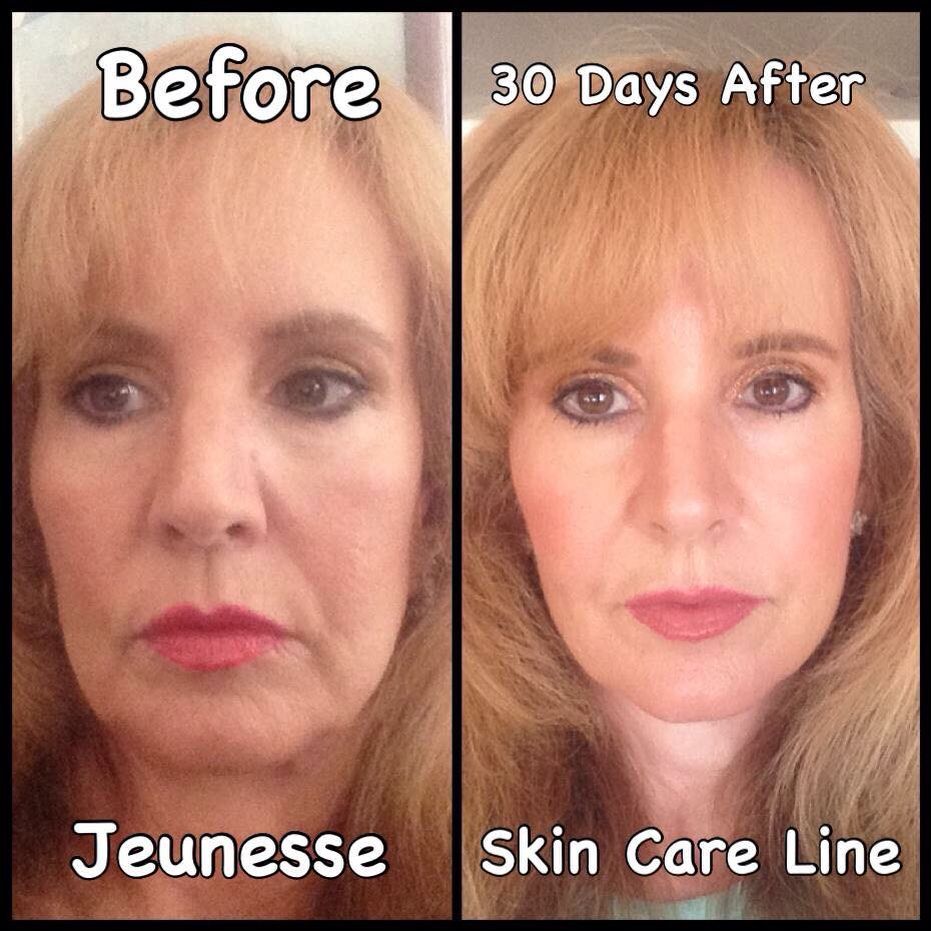 Such neoplasms of the skin are localized mainly in open areas, are characterized by slow growth and in very rare cases are malignant.
Such neoplasms of the skin are localized mainly in open areas, are characterized by slow growth and in very rare cases are malignant.
Such a skin neoplasm as a skin horn occurs in senile people and develops in open areas, mainly in places subject to frequent friction and pressure. The primary cutaneous horn occurs on intact skin, while the secondary is preceded by various skin neoplasms, tuberculosis, lupus erythematosus, and actinic keratosis. After formation, an adult tumor looks like a cone-shaped horn formation, the length of which is several times greater than the diameter of the tumor base. It is localized on the skin, the red border of the lips, the course of the tumor is long, malignancy occurs quite often.
Malignant neoplasms of the skin
Malignant neoplasms of the skin account for 7-10% of all malignant tumors. It affects both sexes, but older people are more susceptible. They differ from benign tumors in that it is difficult to differentiate dermal cells already at the initial stages of the disease, they do not perform their functions, they can affect nearby organs and tissues and metastasize through the blood and lymphatic vessels, causing tumors throughout the body.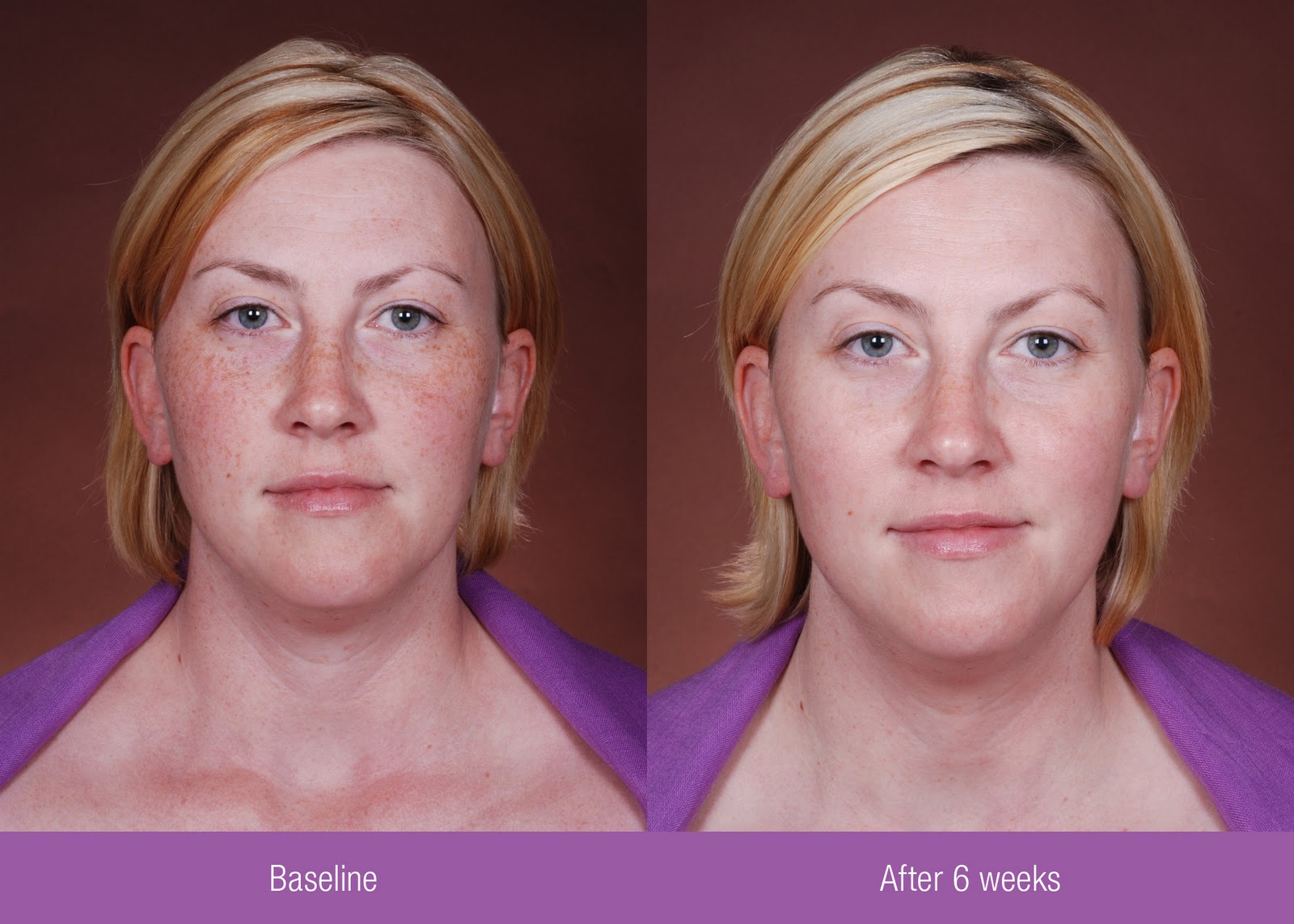
Melanoma is the most malignant of all skin neoplasms, the presence of congenital and acquired age spots increases the risk of melanoma, as it arises from melanocytes – skin pigment cells. Middle-aged and senile women with blond hair and blue eyes are most susceptible to melanoma. Neoplasm on the skin is localized mainly on the lower and upper extremities, the pathogenesis of malignancy of moles and age spots is not fully understood, but their trauma, attempts to remove moles and spots with aggressive chemicals, cuts and insolation contribute to malignancy.
The main symptoms that indicate the malignancy of such neoplasms on the skin as age spots and moles are a change in the pigmentation of the nevus, a sharp increase in size, frequent bleeding and ulceration. That is, any previously non-specific manifestations of a mole speak of its rebirth. And, despite its small size, the tumor quickly spreads to neighboring areas in the form of satellite nodules and metastasizes first to the regional lymph nodes, and then to the internal organs.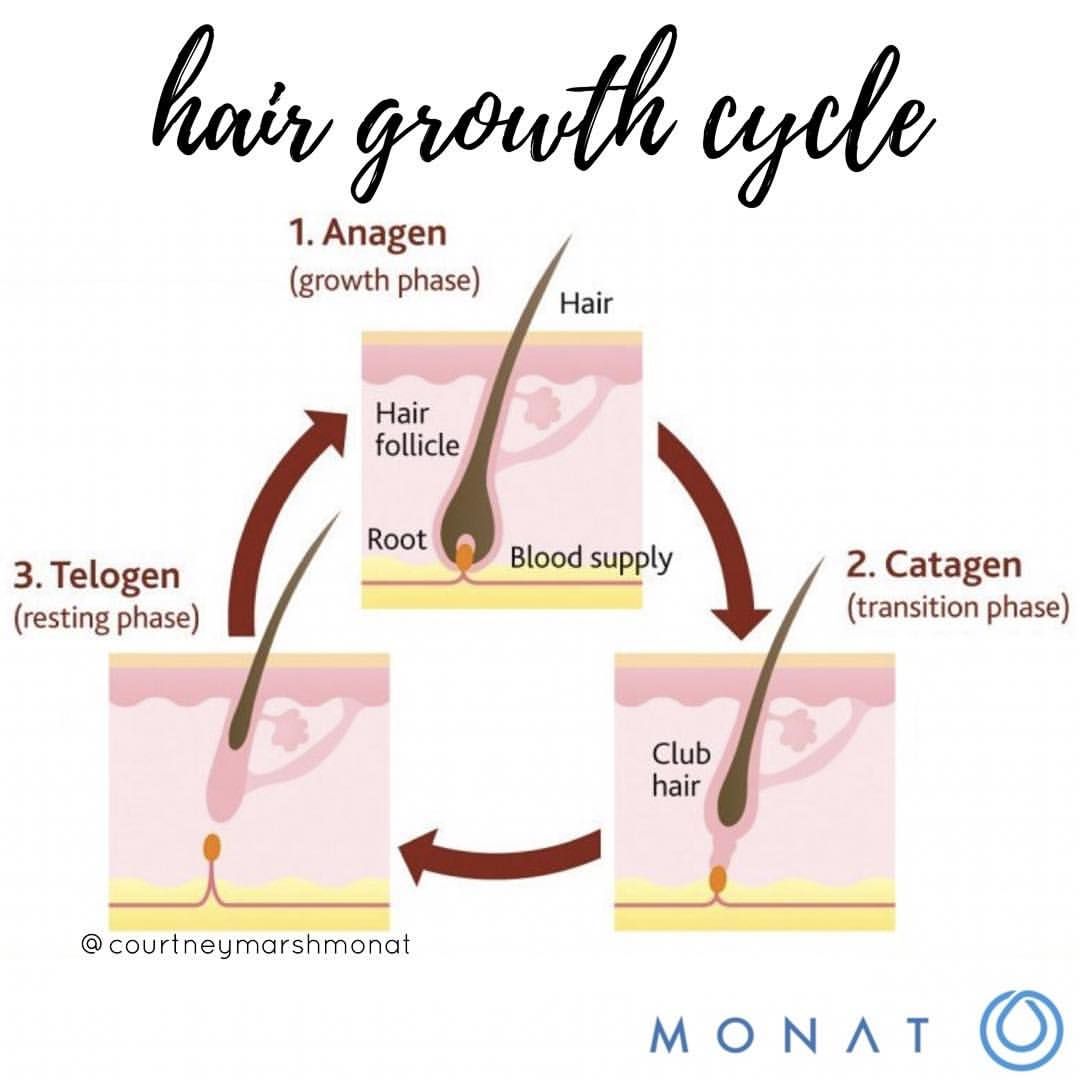 Traumatization can lead to premature transformation into cancer, since even a biopsy for cytological examination is carried out in the presence of erosions and ulcers so as not to activate the oncological process.
Traumatization can lead to premature transformation into cancer, since even a biopsy for cytological examination is carried out in the presence of erosions and ulcers so as not to activate the oncological process.
Epitheliomas are all neoplasms of the skin from epithelial cells and are diagnosed in 50-60% of all skin cancers. Epitheliomas occur in areas not affected by other skin neoplasms. Initially, there is a small nodule of pinkish-yellow hues, which grows over the years, but its size is not significant – up to 1-1.5 cm in diameter, so it goes unnoticed. The activation of the process is indicated by the presence of a yellowish-gray crust, which eventually covers the epithelioma. A roller around a neoplasm on the skin, consisting of cartilaginous seals with a brilliant sheen, is an unfavorable diagnostic sign. In the future, ulceration and bleeding are observed, the tumor quickly metastasizes to regional lymph nodes and other organs.
Kaposi’s sarcoma or angioreticulosis is more common in AIDS patients, but the classic form of sarcoma and skin lesions in immunocompromised patients are clinically and histologically identical. Men are more susceptible to this type of malignant skin tumors; Kaposi’s sarcoma is localized mainly on the lower extremities. Initially, purple, rarely lilac spots appear without clear outlines, later dense rounded bluish-brown nodules up to 2 cm in diameter appear against this background. lymph nodes and metastasis throughout the body.
Men are more susceptible to this type of malignant skin tumors; Kaposi’s sarcoma is localized mainly on the lower extremities. Initially, purple, rarely lilac spots appear without clear outlines, later dense rounded bluish-brown nodules up to 2 cm in diameter appear against this background. lymph nodes and metastasis throughout the body.
Low-grade skin cancer
Despite their small size, such neoplasms of the skin are extremely dangerous, the cells lose their ability to keratinize and pronounced cellular atypism is observed. Similar oncological diseases of the skin are manifested by minor changes, usually the tumor is no more than a pea in size, but the more pronounced atypism and the inability to differentiate the cell type, the more unfavorable the prognosis for these skin neoplasms. Endophytic growth of the tumor leads to germination in the blood vessels and to bleeding, through the blood vessels, cancer cells disseminate throughout the body, causing numerous metastases. As a rule, such forms of cancer end in death from cachexia, bleeding, or autointoxication several years after the diagnosis is made.
As a rule, such forms of cancer end in death from cachexia, bleeding, or autointoxication several years after the diagnosis is made.
Diagnosis of skin neoplasms
Self-diagnosis and regular dispensary examinations are of great importance in early diagnosis. The attentiveness of the doctor during a visual examination allows you to diagnose pathological conditions and skin neoplasms and refer the patient for further examination.
Attentiveness to your health and to the health of your loved ones makes it possible to notice changes in moles, pigmentation and birthmarks in time. And, if skin changes occur without objective reasons, then you should be examined by a dermatologist or an oncodermatologist, where, based on visual examination, histological studies and studies of the general condition of the body, the tumor-like nature of skin neoplasms will be confirmed or excluded.
Treatment and prevention
There is no specific prevention of oncological diseases; preventive measures include the removal of moles and the removal of warts at the initial stage of their occurrence, especially if there are many moles.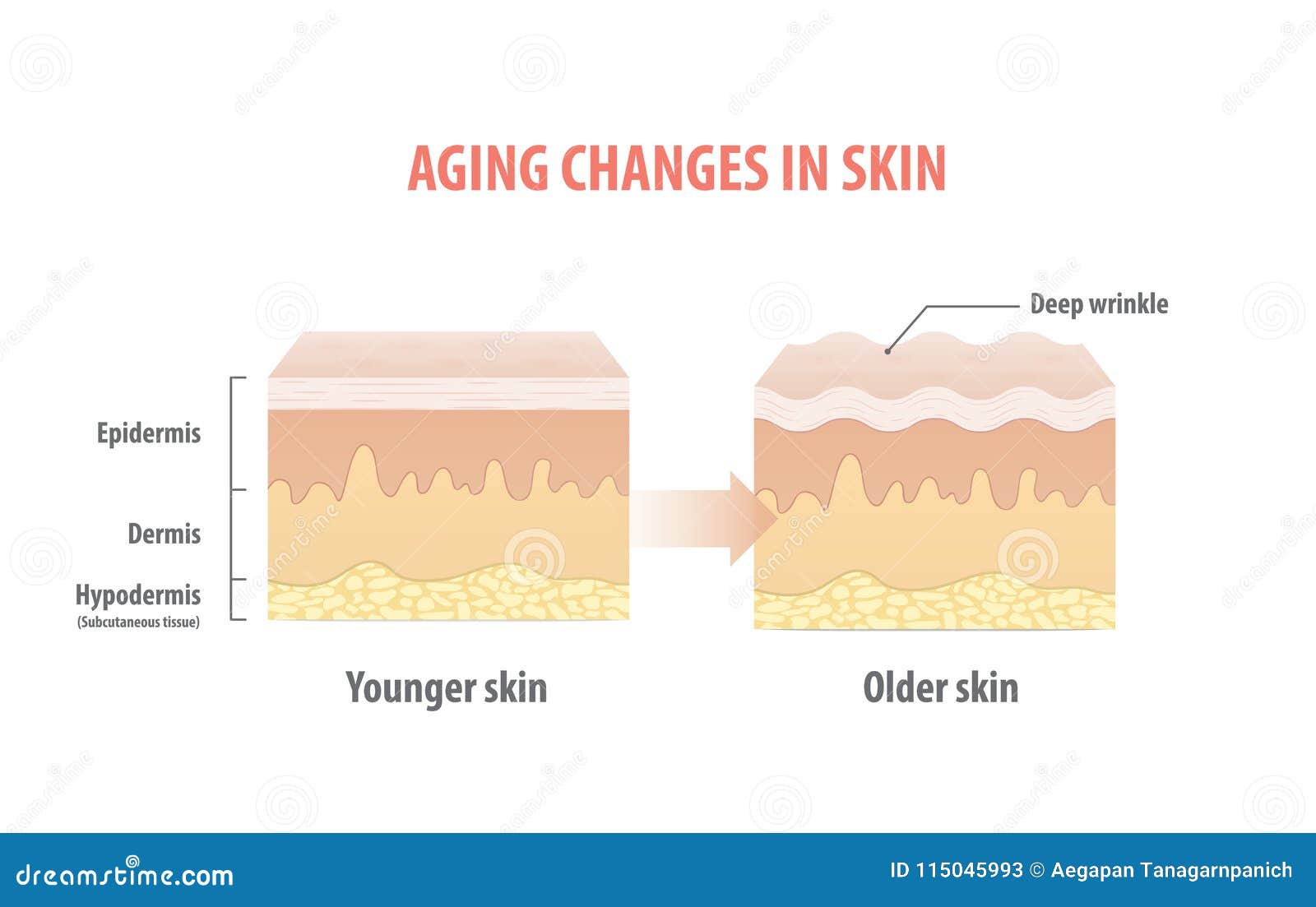 Persons with a genetic predisposition to oncological diseases should avoid insolation, carefully approach the place of choice of the workplace and avoid contact with carcinogenic substances, eliminating foods that can provoke an oncological process from the diet can significantly reduce the likelihood of oncological diseases.
Persons with a genetic predisposition to oncological diseases should avoid insolation, carefully approach the place of choice of the workplace and avoid contact with carcinogenic substances, eliminating foods that can provoke an oncological process from the diet can significantly reduce the likelihood of oncological diseases.
Treatment of skin neoplasms most often consists in removing the affected area with partial excision of healthy tissues. Removal with a laser gives a lower percentage of relapses, since in addition to removal, cauterization of the wound surface occurs and does not allow further dissemination of tumor cells. Electrocoagulation and cryodestruction of benign skin tumors, as well as a radio wave removal method, can be used.
In the event that skin neoplasms are in the stage of inoperable cancer, radiation and chemotherapy are used. But if the neoplasm is initially malignant, the prognosis is always unfavorable, since the metastasizing tumor causes deep lesions of the internal organs, although the manifestations on the skin may be minor. The probability of death is quite high, patients die from autointoxication, massive internal bleeding, multiple organ failure and cachexia.
The probability of death is quite high, patients die from autointoxication, massive internal bleeding, multiple organ failure and cachexia.
Onychogryphosis is a type of onychodystrophy characterized by deformation of the nail plate in the form of a griffin claw. Clinically, onychogryphosis is divided into two stages. Early manifests itself in thickening of the nail, changing its transparency, staining in dirty yellow tones, curvature of the nail plate, often with ingrowth into the skin. Late is accompanied by twisting of the tissues of the horny plates, the appearance of striation, pain when walking. Pathology is diagnosed clinically with blood sampling for RW and sugar, dermatoscopy is used, scrapings are taken from the nail to exclude mycosis, and profile consultations are carried out if necessary. Treatment is to remove the nail plate.
ICD-10
L60.2 Onychogryphosis
- Causes of onychogryphosis
- Classification and symptoms of onychogryphosis
- Diagnosis and treatment of onychogryphosis
- Prices for treatment
General
Onychogryphosis is a rare dystrophic lesion of the nail plate, predominantly localized on the legs, associated with changes in the periungual tissues, hypertrophy of the horny plates, their thickening, twisting of the stratum corneum and curvature in the form of a claw of a mythical bird (griffin). The term “onychogryphosis” was introduced into modern dermatological practice by the German physician and physiologist R. Virchow. As a rule, onychogryphosis is a disease of elderly and senile patients, in very rare cases it can occur even in children. Often, onychogryphosis is diagnosed in athletes. Flatfoot is a common comorbidity. The pathological process does not have a gender and seasonal component, it is non-endemic. The urgency of the problem is associated with the possible mycotic or syphilitic etiology of onychogryphosis, pain that occurs when walking, and a decrease in the quality of life of patients.
The term “onychogryphosis” was introduced into modern dermatological practice by the German physician and physiologist R. Virchow. As a rule, onychogryphosis is a disease of elderly and senile patients, in very rare cases it can occur even in children. Often, onychogryphosis is diagnosed in athletes. Flatfoot is a common comorbidity. The pathological process does not have a gender and seasonal component, it is non-endemic. The urgency of the problem is associated with the possible mycotic or syphilitic etiology of onychogryphosis, pain that occurs when walking, and a decrease in the quality of life of patients.
Onychogryphosis
Causes of onychogryphosis
The exact cause of the development of the disease has not been established. It is believed that onychogryphosis occurs under the influence of exogenous and endogenous triggers. The first include injuries, frostbite, tight shoes, local disturbance of the blood supply to the periungual tissues, inaccurate processing of the nail plates, anhidrosis, and local skin infections. The second group includes immune disorders, skin sensitization, metabolic changes in the dermis, age-related endocrine disruptions, physiological tissue aging, chronic dermatoses, varicose veins, keratoses. Similar nail changes can also be seen with syphilis. Rare cases of congenital onychogryphosis, caused by unidentified gene mutations, have been described. The pathogenesis of the disease is not fully understood. The only well-established fact in the development of onychogryphosis is malnutrition of the nail plate.
The second group includes immune disorders, skin sensitization, metabolic changes in the dermis, age-related endocrine disruptions, physiological tissue aging, chronic dermatoses, varicose veins, keratoses. Similar nail changes can also be seen with syphilis. Rare cases of congenital onychogryphosis, caused by unidentified gene mutations, have been described. The pathogenesis of the disease is not fully understood. The only well-established fact in the development of onychogryphosis is malnutrition of the nail plate.
If onychogryphosis is based on trauma, wearing tight shoes, frostbite, the formation of a subungual hematoma occurs, which mechanically compresses the periungual tissues, disrupting their nutrition and causing changes in the nail matrix. Horny cells thicken due to intracellular retention of exudate, disproportionate disturbances of metabolic processes occur in them. At the same time, damaged keratinocytes begin to secrete pro-inflammatory cytokines that initiate inflammation in the dermis. T-lymphocytes produce interleukins, which enhance exudative and proliferative processes in the periungual tissues and in the nail matrix. The horny cells of the epidermis, swollen, changed their composition, begin to divide intensively.
T-lymphocytes produce interleukins, which enhance exudative and proliferative processes in the periungual tissues and in the nail matrix. The horny cells of the epidermis, swollen, changed their composition, begin to divide intensively.
One layer of horny cells overtakes the other, keratinocytes are layered on top of each other, changing the nail plate, its shape and color. The resulting hyperkeratosis disrupts the connection of the nail with the nail bed. A hypertrophied nail is formed. Something similar, except for the formation of a subungual hematoma, occurs if infection or hypohidrosis becomes the cause of onychogryphosis. Chronic inflammation provokes infiltration of the nail bed, stimulates keratinization processes in the matrix and along the entire length of the stratum corneum with the formation of a hyperkeratotic nail.
If onychogryphosis is provoked by endogenous triggers, then the changes in the horny plates are based on immune disorders against the background of age-related changes in the physiological properties of the skin and its appendages. The nail matrix becomes thinner with age, the amount of water and lipids in it decreases. In the epidermis and dermis, some of the blood vessels become empty. All this leads to malnutrition of the skin appendages, trophic disorders, changes in the chemical composition of the nail.
The nail matrix becomes thinner with age, the amount of water and lipids in it decreases. In the epidermis and dermis, some of the blood vessels become empty. All this leads to malnutrition of the skin appendages, trophic disorders, changes in the chemical composition of the nail.
Against this background, any effect on the skin triggers inflammation in the dermis, enhances the proliferation of keratinocytes, combined with the abnormal growth of horny cells that form the nail plate. Subungual hyperkeratosis occurs, the nail thickens, changes color, deforms, partially loses contact with the nail bed, eventually acquiring the shape of a claw. Onychogryphosis is aggravated by vascular insufficiency, which develops in many patients over 60 years of age, drug sensitization and diabetes mellitus (increased vascular fragility).
Classification and symptoms of onychogryphosis
In practical dermatology, it is customary to distinguish between congenital and acquired onychogryphosis.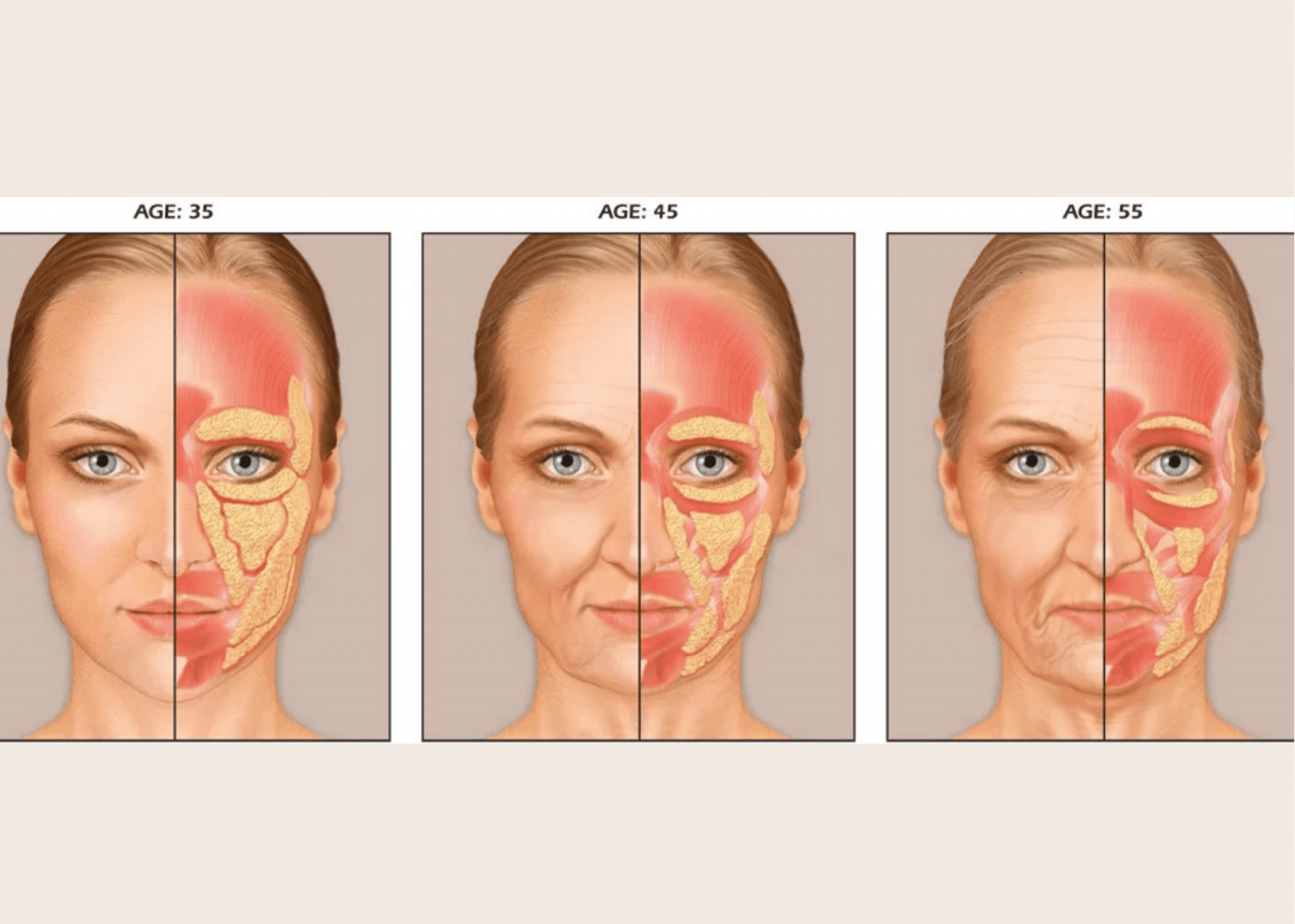 This is important for the appointment of adequate therapy, which depends on the cause of the pathological process. Clinically, there are two stages in the development of onychogryphosis. At an early stage of the disease, pain occurs in the soft tissues near the nail plate and under it. Such sensations give patients discomfort when walking, since the pathological process is most often localized on the big toes. The pain is aggravated by the slightest pressure on the nail plate. Over time, the nail begins to thicken, an unnatural horny growth appears, rising above the level of the nail bed. If the thickness of the nail exceeds 1 mm, we can already talk about the beginning of onychogryphosis. The nail darkens, becomes dense, difficult to process, the edges of the nail plate can grow into the skin.
This is important for the appointment of adequate therapy, which depends on the cause of the pathological process. Clinically, there are two stages in the development of onychogryphosis. At an early stage of the disease, pain occurs in the soft tissues near the nail plate and under it. Such sensations give patients discomfort when walking, since the pathological process is most often localized on the big toes. The pain is aggravated by the slightest pressure on the nail plate. Over time, the nail begins to thicken, an unnatural horny growth appears, rising above the level of the nail bed. If the thickness of the nail exceeds 1 mm, we can already talk about the beginning of onychogryphosis. The nail darkens, becomes dense, difficult to process, the edges of the nail plate can grow into the skin.
In the second stage of onychogryphosis, deep transverse and longitudinal stripes appear on the hypertrophied nail plate. The color of the nail changes to dirty yellow with a black-gray tint. The stratum corneum begins to twist, becoming so hard that wearing even comfortable shoes causes severe pain. It is not possible to process the nail without preliminary softening, it goes beyond the top of the finger and begins to bend inward, acquiring the shape of a bird’s beak. Sometimes the direction of growth of the nail becomes helical or spiral, it twists. Its length reaches 4-6 cm, the surface acquires a brown tint, tubercles and roughness appear on it. The shape resembles an animal horn. Patients cannot put on shoes without outside help, they move with difficulty. Such onychogryphosis occurs in patients of senile and advanced age.
The stratum corneum begins to twist, becoming so hard that wearing even comfortable shoes causes severe pain. It is not possible to process the nail without preliminary softening, it goes beyond the top of the finger and begins to bend inward, acquiring the shape of a bird’s beak. Sometimes the direction of growth of the nail becomes helical or spiral, it twists. Its length reaches 4-6 cm, the surface acquires a brown tint, tubercles and roughness appear on it. The shape resembles an animal horn. Patients cannot put on shoes without outside help, they move with difficulty. Such onychogryphosis occurs in patients of senile and advanced age.
Diagnosis and treatment of onychogryphosis
Onychogryphosis is diagnosed by a dermatologist or a podiatrist. The diagnosis is not difficult due to the typical clinic and anamnesis. If necessary, specialized consultations are prescribed (endocrinologist, vascular surgeon, immunologist-allergist). Acquired onychogryphosis requires blood sampling for RW and determination of blood sugar levels (with late syphilis and diabetes mellitus, a similar deformation of the nail plate occurs)..png) Be sure to exclude mycotic infection. To do this, dermatoscopy is performed, a Wood’s lamp is used, scrapings from the affected nail are microscopically examined, or pathological material is sown on nutrient media.
Be sure to exclude mycotic infection. To do this, dermatoscopy is performed, a Wood’s lamp is used, scrapings from the affected nail are microscopically examined, or pathological material is sown on nutrient media.
If a secondary infection joins the manifestations of onychogryphosis, it is imperative to establish the causative agent of pyoderma by sowing the separated pustules with the determination of sensitivity to antibiotics. Pathology therapy can be effective only if the exact cause of onychogryphosis is clarified. The sooner the patient turns to a specialist, the better the result. The meaning of therapy is to reduce the thickness of the nail plate, return the nail to its normal shape. To do this, it is necessary to partially or completely remove the nail plate. The removal method is chosen by the podiatrist. With a conservative option, the nail is first softened with a special paste, applying it to the affected plate for 30-40 minutes. After that, the paste is washed off with warm water, and the softened part of the nail is removed by mechanical scraping.
The course consists of at least 3-5 procedures. At the same time, vitamins are prescribed inside, and externally, restorative ointments based on retinol and gelatin are used. An alternative are keratolytic patches. In severe cases, the nail is removed completely (surgically or with a laser). On the hands, for aesthetic purposes, they retain the base of the nail. Inside, vitamins, minerals, retinol and tocopherol preparations are used. The course of treatment is up to 4-6 months. Prevention of onychogryphosis consists in avoiding injuries, wearing comfortable shoes, correcting concomitant diseases, proper processing of nail plates, and protecting hands from household chemicals. The prognosis is doubtful, a complete cure is often impossible.
You can share your medical history, what helped you in the treatment of onychogryphosis.
If the skin neoplasm has a benign course or a state of precancer, then timely surgical intervention almost completely eliminates the possibility of recurrence and corrects cosmetic defects in appearance.

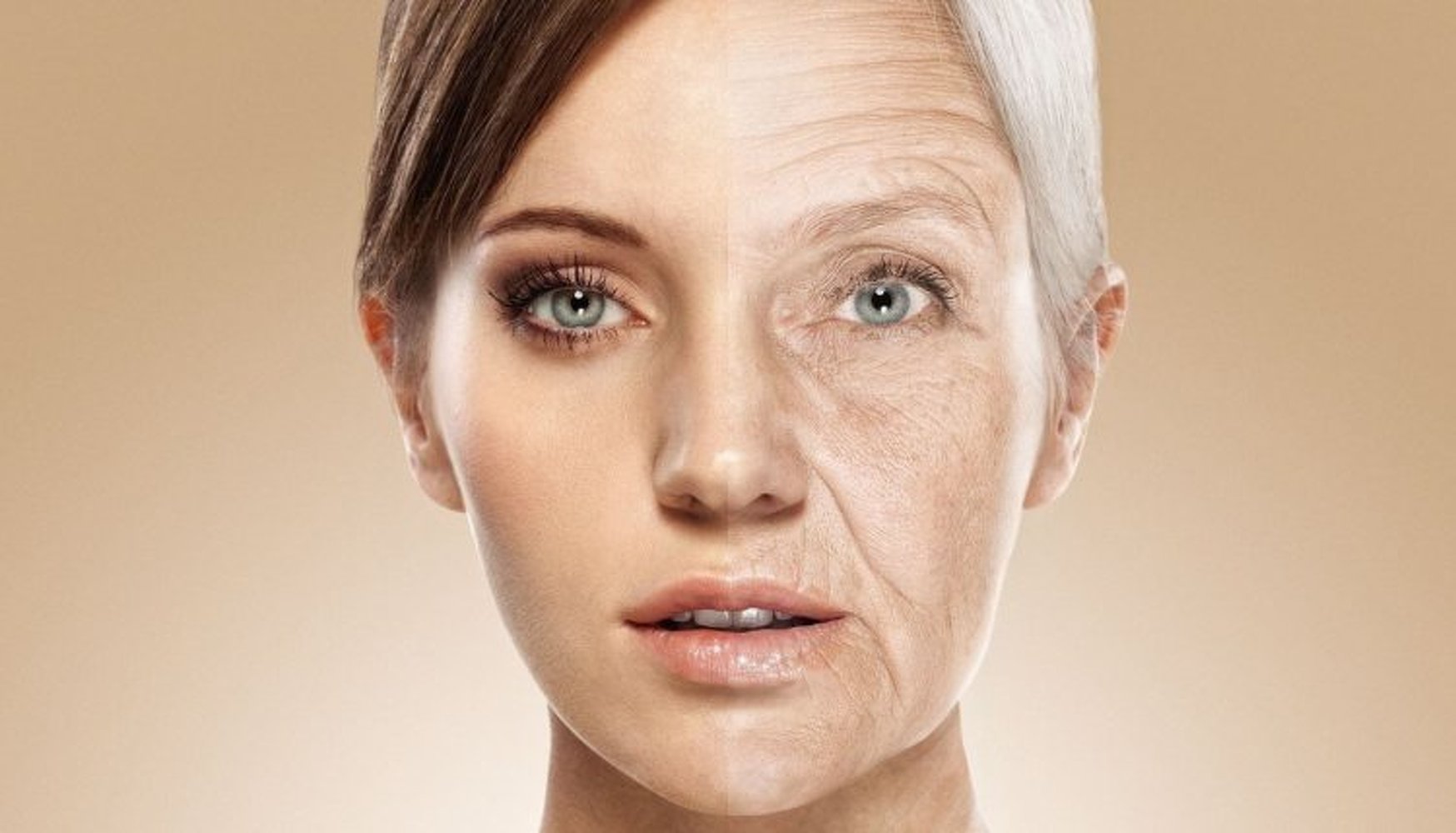 Also, in some cases, the removal occurs in several stages. Before the procedure, the patient must pass a histological analysis.
Also, in some cases, the removal occurs in several stages. Before the procedure, the patient must pass a histological analysis. May be single or multiple.
May be single or multiple.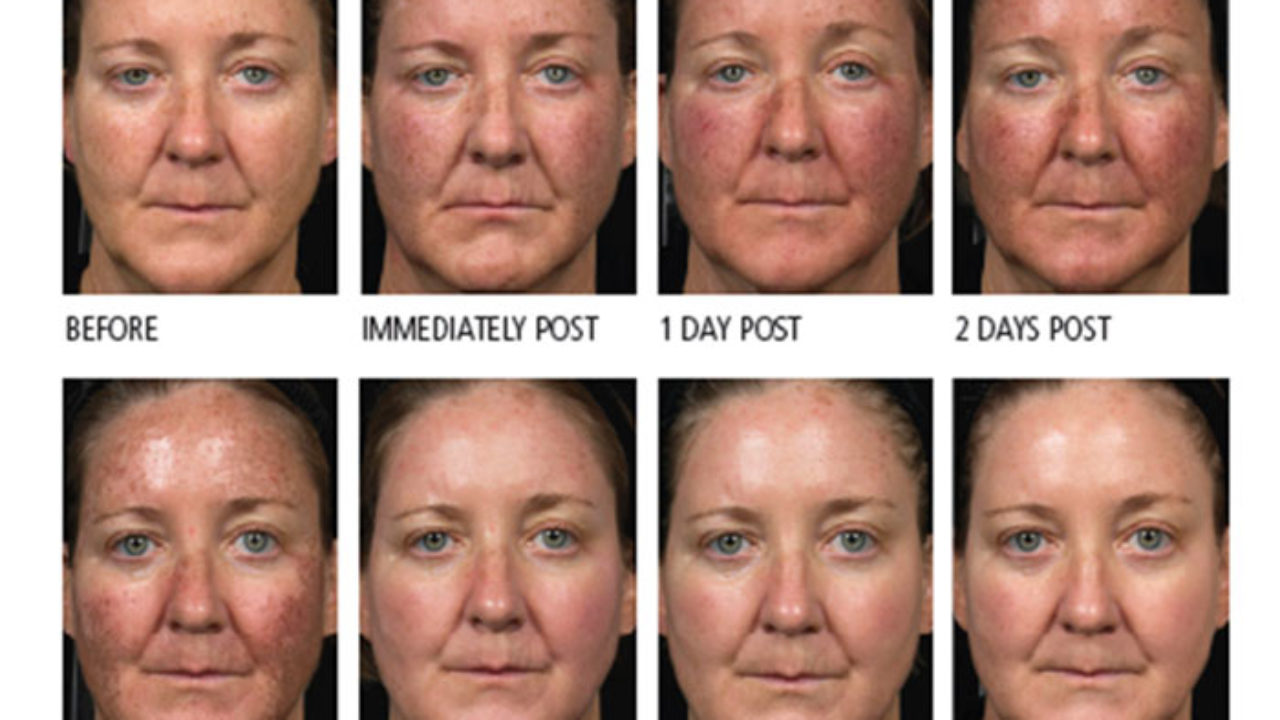 The main indication for removal is a cosmetic defect. The laser method is recognized as the most optimal.
The main indication for removal is a cosmetic defect. The laser method is recognized as the most optimal.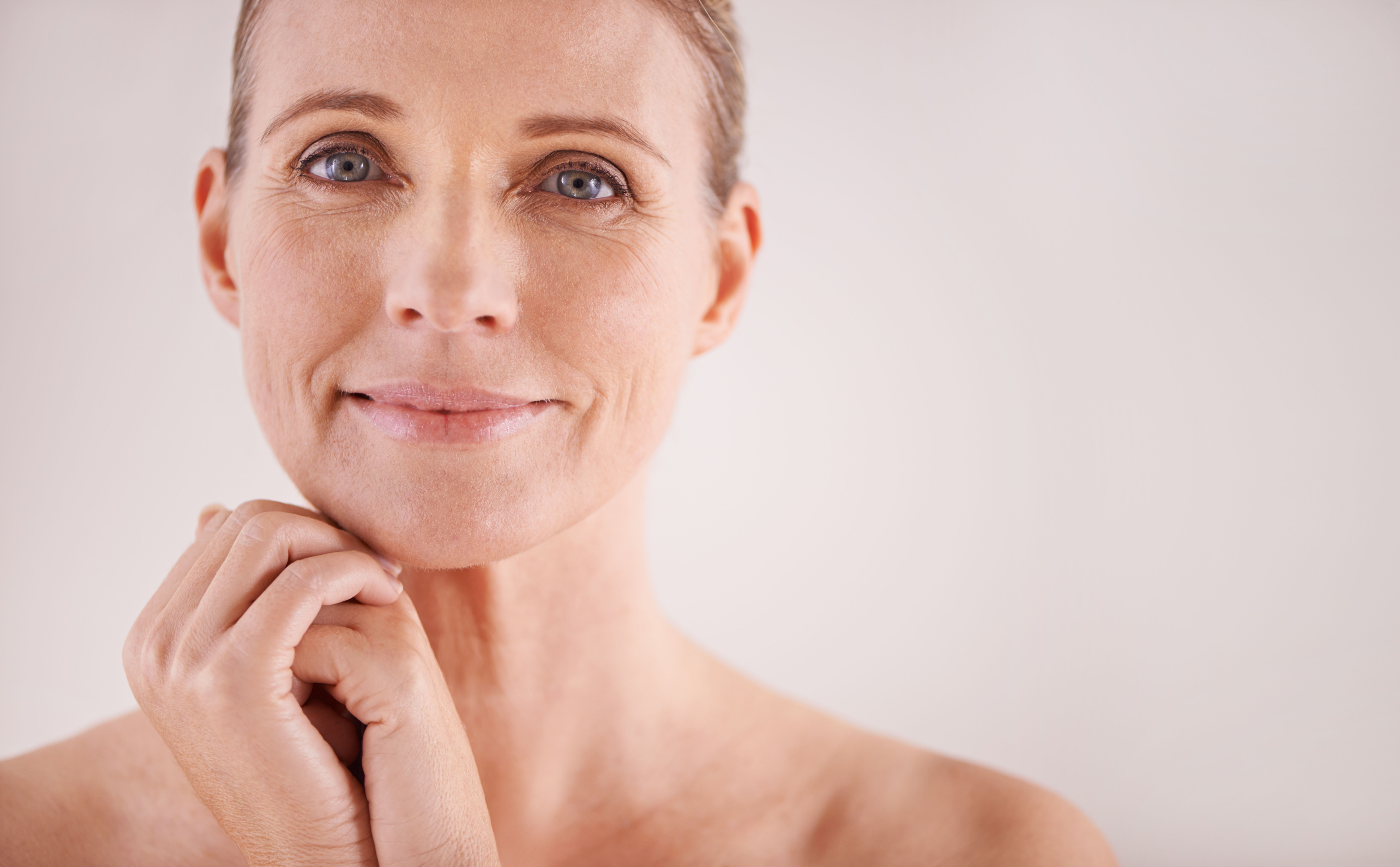 Their number can be from 20 to 100. The diagnosis can be made after a histological examination. Treatment of the infection is reduced to the removal of rashes by the laser method, taking antiviral drugs and increasing immunity. During removal, local anesthesia is used. The resulting wounds after the procedure are treated with antiseptics.
Their number can be from 20 to 100. The diagnosis can be made after a histological examination. Treatment of the infection is reduced to the removal of rashes by the laser method, taking antiviral drugs and increasing immunity. During removal, local anesthesia is used. The resulting wounds after the procedure are treated with antiseptics.